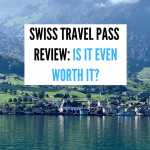Blessed with romantic lakeside cities, quiet villages where traditions thrive, dreamy alpine pastures alive with the music of cowbells, lush wine villages and vineyards, and some of the most spectacular peaks in the world, Switzerland is the kind of country where you’re surrounded by magnificent landscapes no matter where you go, and also on your way there. It’s for good reason that most visitors spend a week or two traveling around Switzerland rather than staying in one place for the entire duration of their trip. If you’re planning a trip to Switzerland, it’s worth knowing about the Swiss Travel Pass, a public transportation pass for tourists that offers significant value for money and convenience.
You might be wondering if the Swiss Travel Pass is worth it. On my recent 3-week long trip to Switzerland, I used a 15-day Swiss Travel Pass to take multiple trams, trains, buses, boats, and cable cars to travel all around the country. I also used it to take Swiss panorama trains such as the Gotthard Panorama from Lugano to Lucerne and the GoldenPass Express from Montreux to Interlaken. I came away with a better understanding of what the Swiss Travel Pass includes, what options are available, any discounts, how to use it, and how to get the most value out of it.
A Swiss Travel Pass might be a smart choice depending on your itinerary and the duration of your trip to Switzerland. In this post where I review the Swiss Travel Pass, I’ll take you through all the details of the Swiss Travel Pass, and answer all possible questions you might have, as well as those you might not think to ask. Toward the end, I also compared the Swiss Travel Pass to other passes like the Jungfrau Pass and the Swiss Half-Fare Card.
Know this: you will love every moment of traveling around Switzerland, especially if you do so by train. Verdant farms, turquoise lakes, and snow-capped peaks—I don’t believe there’s a truly boring train window view in the country!
As a side note, I am shocked by how many tourists visiting Switzerland don’t know about the Swiss Travel Pass. I talked to many fellow travelers while traveling around by train, including a sweet couple from the Middle East, a Pakistani family, and a woman from the UK, and to my surprise, none of them knew about the Swiss Travel Pass.
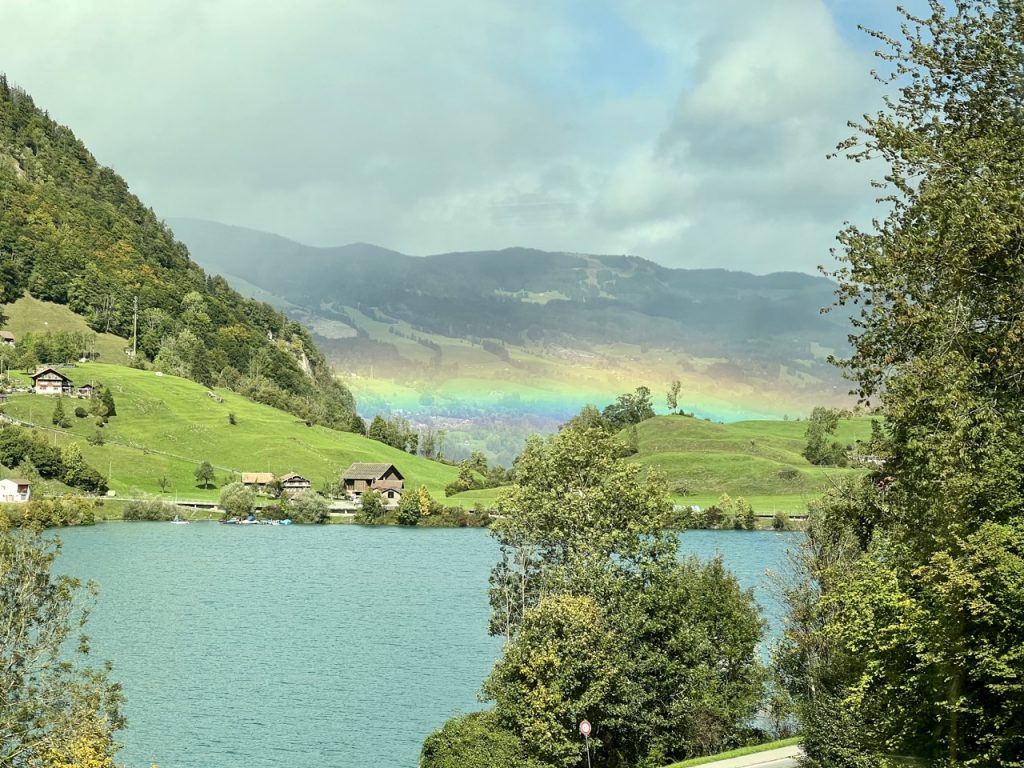
Like me, they were crisscrossing the country by train many times, all on point-to-point tickets! Not only is that expensive, but it also sounds like an unnecessary inconvenience to organize and work that out for a group. Getting a Swiss Travel Pass is so much more straightforward. Especially when you’re spending the same amount or even coming away with a cheaper deal.
I hope this post helps you make an informed decision about whether or not you should buy a Swiss Travel Pass to get around in Switzerland as a tourist, and if it’s worth it for you.
What is the Swiss Travel Pass?
The Swiss Travel Pass is a travel pass for foreign tourists that allows unlimited free travel on all public transportation including trains, trams, buses, gondolas, and boats in over 90 cities in Switzerland, and offers some discounts (25-50%) on mountain transport such as mountain railways, funiculars, and cable cars.
The Swiss Travel Pass also provides free entry to over 500 museums around Switzerland and discounted entry to other attractions and excursions. It is offered by the Swiss Travel System.
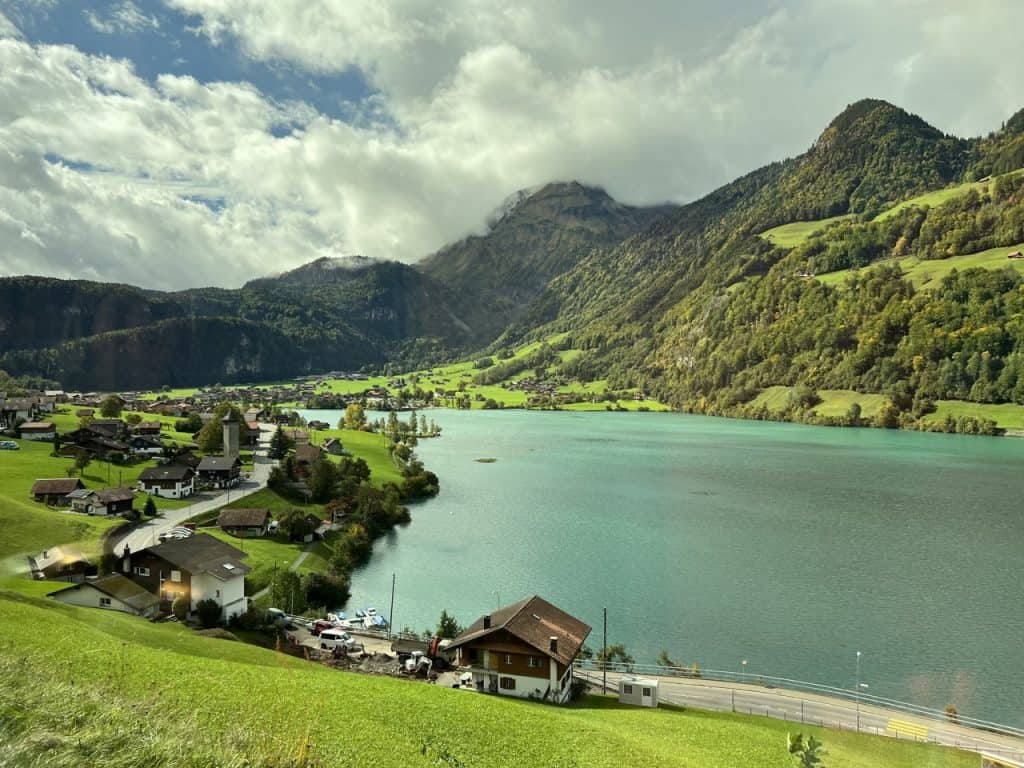
What is included in the Swiss Travel Pass?
- Unlimited free travel on trains, buses, trams, boats, and many mountain railways, funiculars and cable cars.
- The Swiss Travel Pass also includes rail journeys on premium panorama trains such as the GoldenPass Express, Bernina Express, Glacier Express, and Gotthard Panorama Express. But you will need to pay a small seat reservation fee to reserve your seat in advance.
- Many funiculars, gondolas, and cable cars, are included. For example in Bernese Oberland in the Jungfrau region, transportation up to the villages of Grindelwald, Wengen, and Murren are included.
- The Swiss Travel Pass offers discounts of up to 50% on mountain railways and gondolas that are not included.
- Mountain excursions such as Rigi, Stanserhorn and Stoos, are included (in 2022 at the time of writing).
- Boat cruises on Lake Zurich are included in the Swiss Travel Pass. Boat excursions on Lake Thun, Lake Brienz, and Lake Lucerne are also included and you should schedule some time in your Switzerland itinerary to do those if you’re in Zurich, Interlaken or Lucerne.
- The Swiss Travel Pass also offers free entry to over 500 museums.
- There are discounts of up to 50% on e-bike rentals at train stations.
What options are available in the Swiss Travel Pass?
Swiss Travel Pass Validity Duration Options:
The Swiss Travel Pass is available for 3, 4, 6, 8, or 15 consecutive days of travel. So whether you’re visiting Switzerland for a few days, or a week, or even a couple of weeks, there is a Swiss Travel Pass that’s right for your trip duration.
Swiss Travel Pass Flex for Total Flexibility:
For a more flexible option, the Swiss Travel Pass Flex is available for 3, 4, 6, 8 or 15 freely selectable days of travel within a month (30 days). So the days of travel do not have to be consecutive. But you will have to activate your pass for each day of travel—you can do that online here.
You might prefer this option depending on the duration of your stay in Switzerland and how often you plan to be taking public transportation.
This added advantage of flexibility comes at a greater cost—a Swiss Travel Pass Flex is more expensive than a Swiss Travel Pass of the same duration.

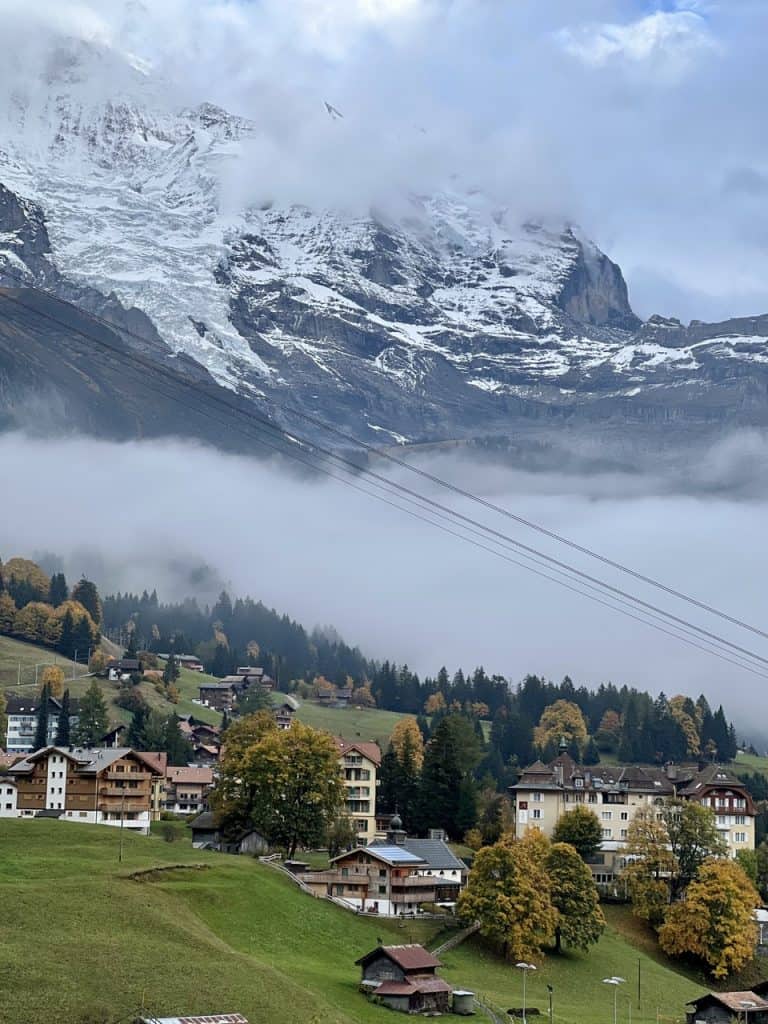
Swiss Travel Pass Class Options:
You can get a Swiss Travel Pass for either First Class or for Second Class. This matters on trains, where you can sit in a 1st Class car or a 2nd Class one, and on boat trips, where there might be separate seating areas and restaurant tables.
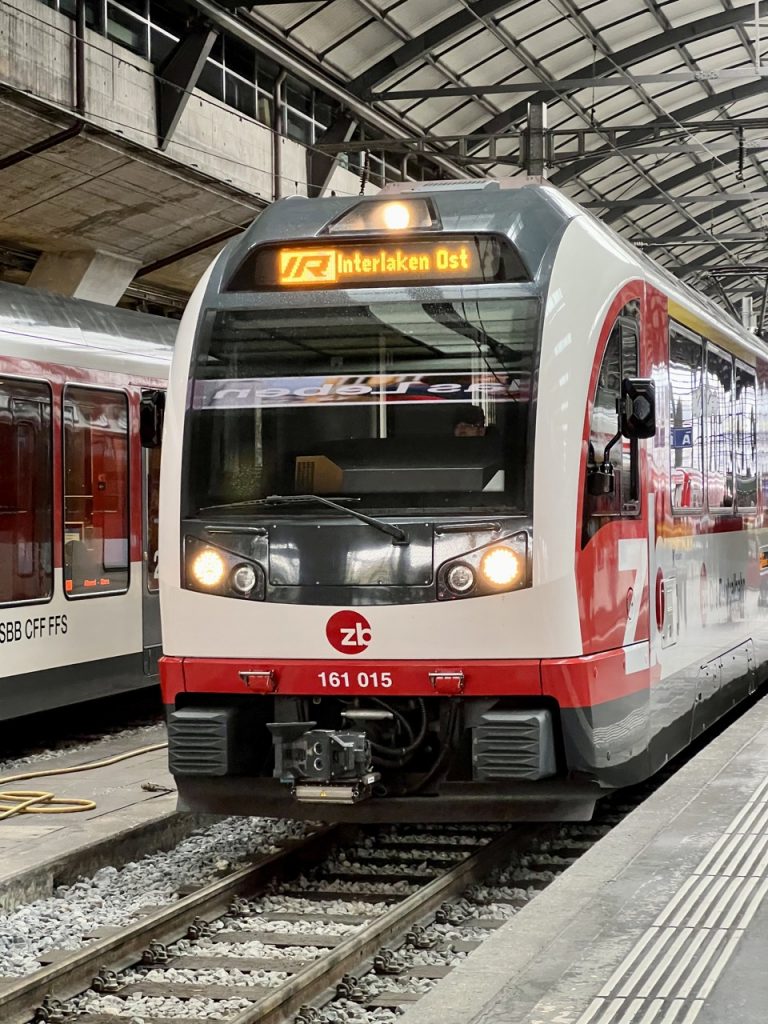
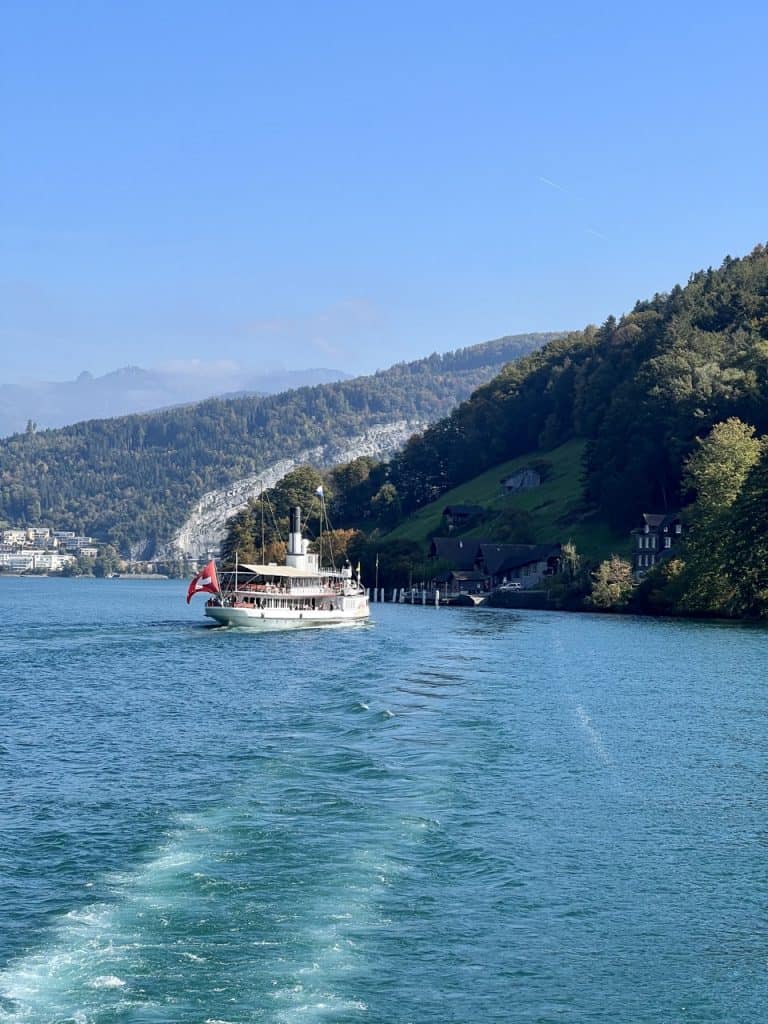
First Class tickets on boats allow you to sit on the Upper Deck, which offers better views and fewer crowds. You can also use your 1st Class Swiss Travel Pass to make restaurant reservations on the boat. There are no classes on buses, mountain cable cars, funiculars, or trams.
I used a Swiss Travel Pass for First Class and undertook a vast majority of my train journeys in 1st Class carriages. But I also traveled in 2nd class in the beginning and end of my trip on the days when I wasn’t using this pass.
Differences between 1st Class and 2nd Class Coaches on Swiss Trains
While First Class carriages have fewer seats and a quiet environment that will be appreciated by anyone trying to get some work done, Second Class carriages are just as comfortable.
There are toilets in both coaches, adequate space to keep your luggage on racks or between the seats, and both are clean and comfortable.
I traveled on both classes, and the one advantage of First Class coaches is that you can sit on a single seat on one side of the aisle, so if you’re a solo traveler and don’t want to sit next to another passenger, then that is an option in First Class. In Second Class, all seats are a pair of two seats, on both sides of the aisle.
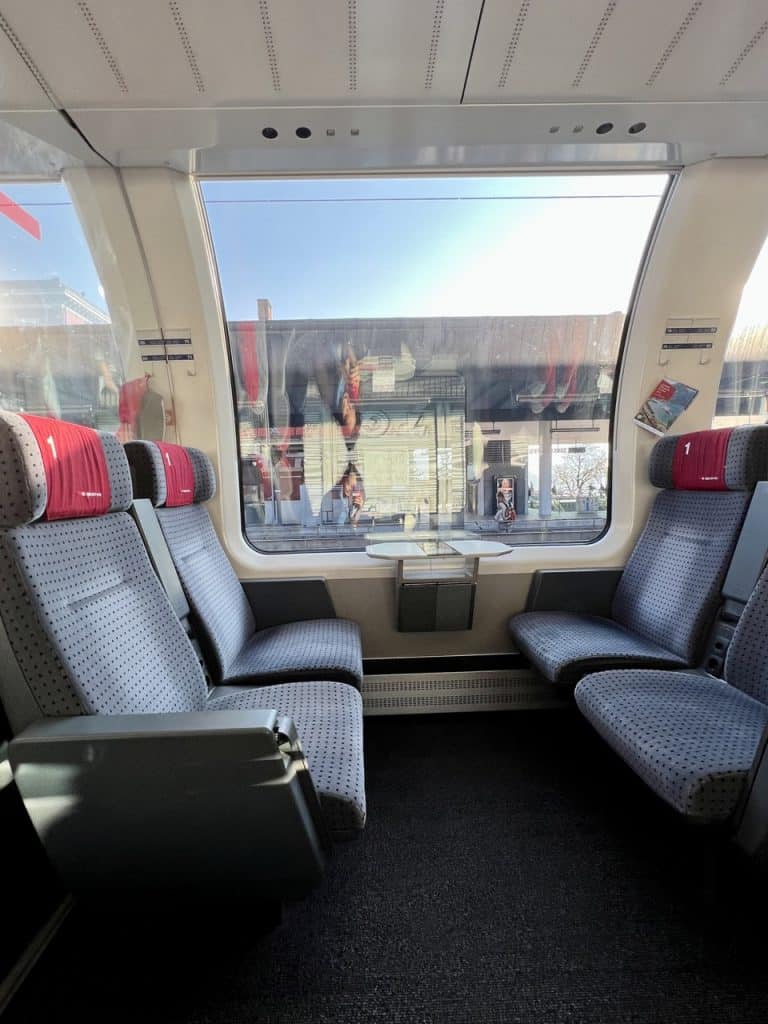
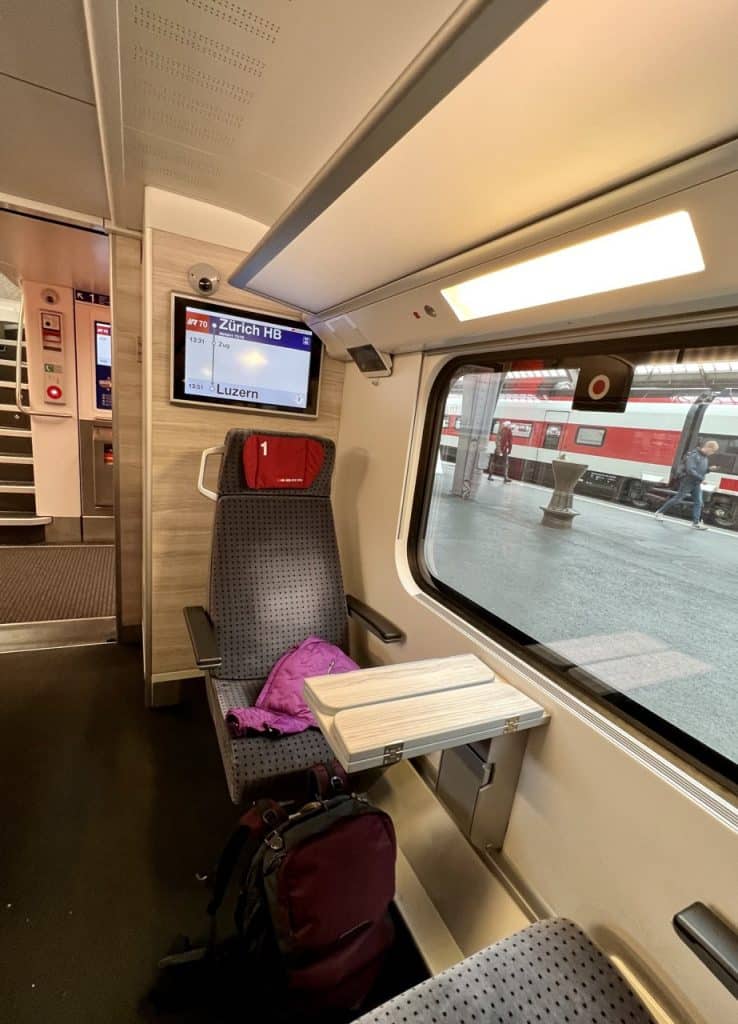
The other advantage of First Class cars is that there are far more electrical sockets to plug in your devices and/or charge your phone.
On some trains, there are First Class carriages specifically for business travelers, so they are quieter than other First Class carriages. In these carriages, there are enough sockets where you can plug in your laptop charger and get to work.
I’ll admit I was so optimistic to think that I’d get a lot of work done while seated in this carriage on my way from Wengen in the Bernese Oberland to Zurich, but I kept getting distracted by the views. Instead of looking at my laptop screen, I spent most of my time looking out the window!
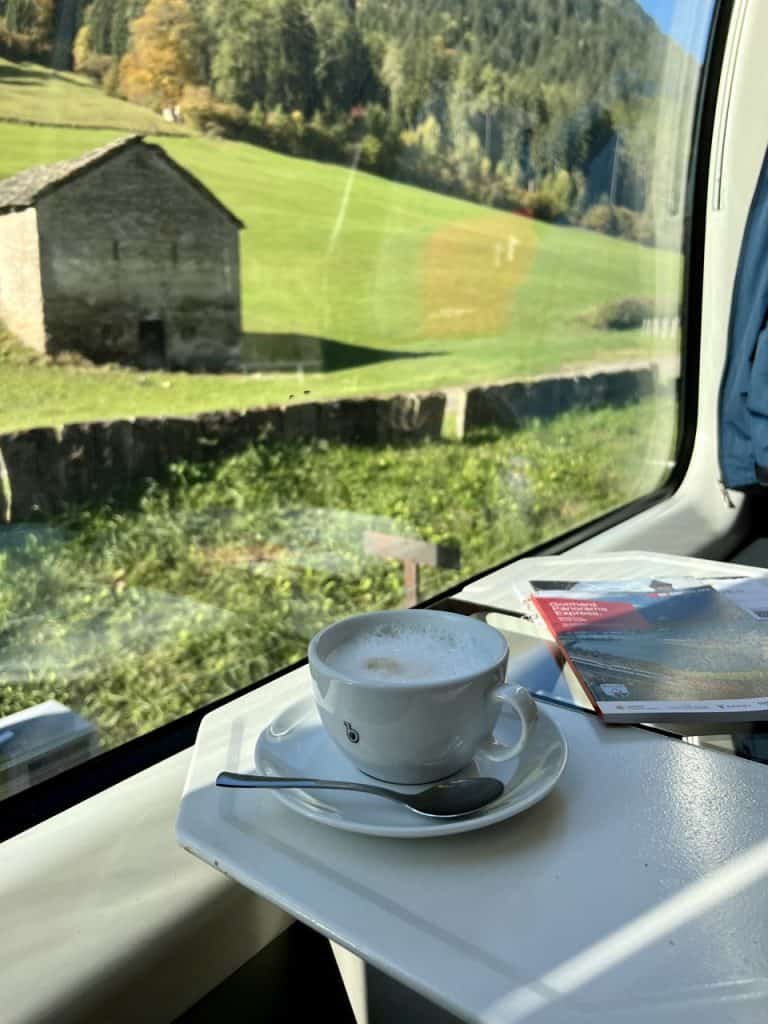
You have the same two options for a Swiss Travel Pass Flex: so either First Class or Second Class.
Who can use the Swiss Travel Pass?
The Swiss Travel Pass is meant for foreign tourists, i.e. people who live outside Switzerland and Liechtenstein.
You might be wondering if anyone ever truly verifies your place of residence and identity. Well, I was asked to show my passport a couple of times while presenting my Swiss Travel Pass on the train, so that can definitely happen.
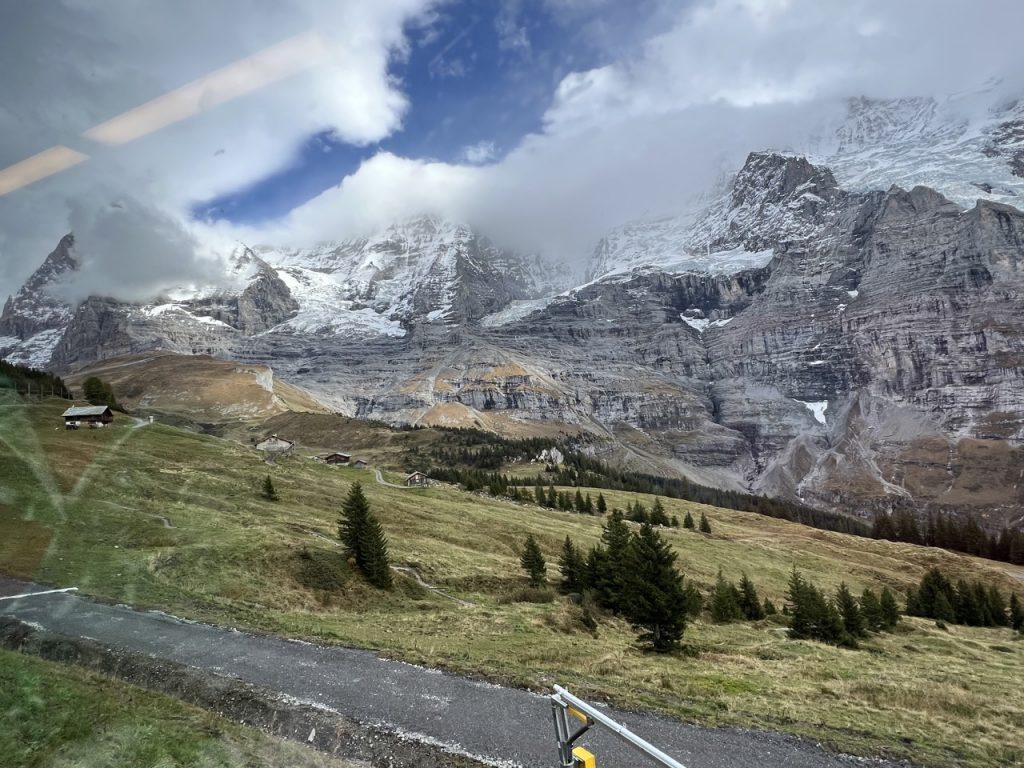
How much does the Swiss Travel Pass cost?
Here are the costs for the Swiss Travel Pass, depending on validity and class. These prices are applicable to travelers who are over 25 years old.
| Swiss Travel Pass Validity | 2nd Class Price in CHF | 1st Class Price in CHF |
| Swiss Travel Pass 3 days | 232.00 | 369.00 |
| Swiss Travel Pass 4 days | 281.00 | 447.00 |
| Swiss Travel Pass 6 days | 359.00 | 570.00 |
| Swiss Travel Pass 8 days | 389.00 | 617.00 |
| Swiss Travel Pass 15 days | 429.00 | 675.00 |
| Current rates as of December 2022 |
Are there discounted Swiss Travel Passes?
Yes, discounts on the Swiss Travel Pass are available for travelers under 25 years of age, and for young travelers between the ages of 6 and 16.
This means that families traveling with children in Switzerland will be able to use the Swiss Travel Pass at a discounted rate, and might not need a separate pass for each family member.
- Travelers under 25 years of age can get a Swiss Travel Pass Youth which offers a 30% discount on the Swiss Travel Pass. The validity duration and class options remain the same.
- Children between the ages of 6 and 16 years, who are accompanied by at least one parent who holds a valid Swiss Travel Pass (or another Swiss Travel System ticket or pass) along with a Swiss Family Card can travel for free on public transportation. A Swiss Family Card is available free of charge while buying the Swiss Travel Pass online at the SBB website or you can ask for it at any train station in Switzerland when you arrive.
- Children between the ages of 6 and 16 who are not accompanied by a parent get a 50% discount on a Swiss Travel Pass (or another Swiss Travel System ticket or pass).
- Children under 6 years of age can travel for free on public transportation and do not need a pass, ticket, or Swiss Family Card.
So basically, if a family of five consists of three children under the age of 16, then they’d be paying for just two Swiss Travel Passes for the parents, provided they also remembered to get a free Swiss Family Card. That is some great value for money for a family that plans to do a fair bit of traveling around Switzerland.
Are there any other public transportation cards or passes available to tourists?
Other than the Swiss Travel Pass and the Swiss Travel Pass Flex, it’s worth for tourists to know about the Swiss Half Fare Card that offers discounts of 50% on public transportation including trains, bus, boats, and most mountain railways.
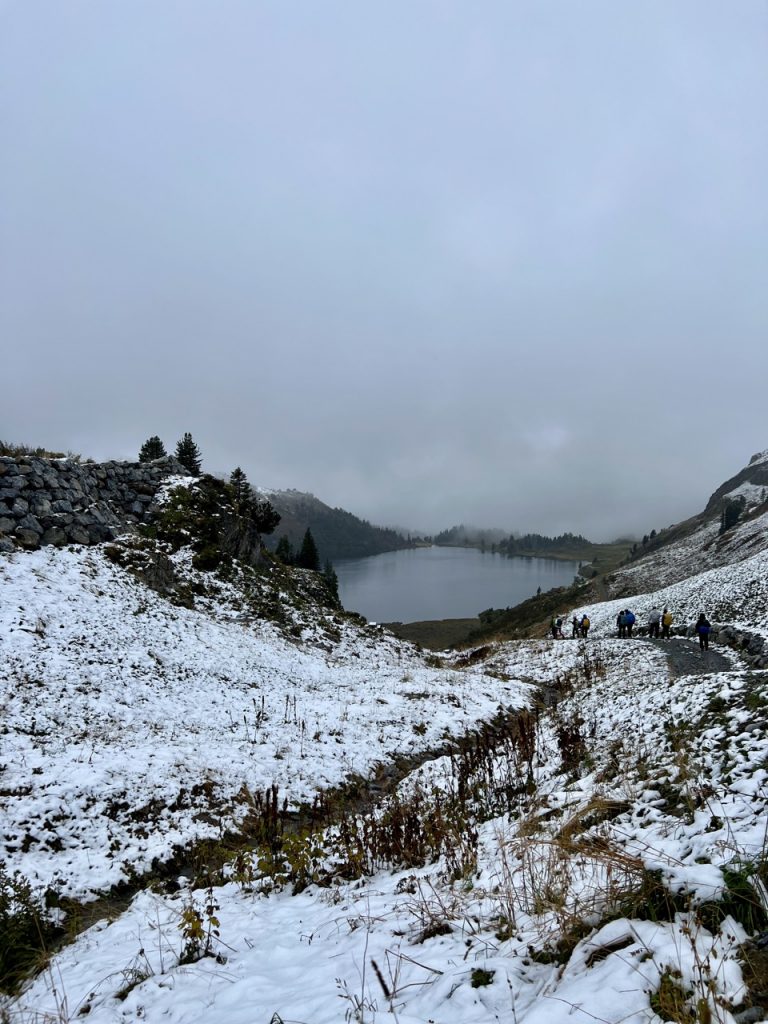
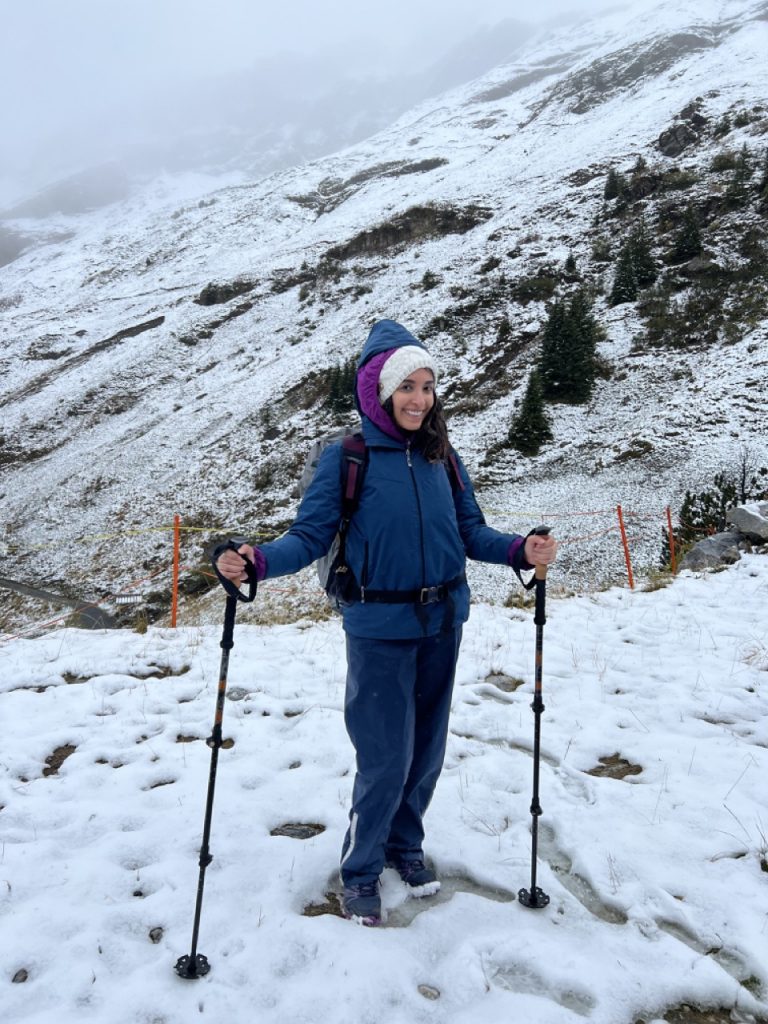
Okay, so what exactly is the Swiss Half Fare Card?
The Swiss Half Fare Card is a card that allows tourists to travel on public transportation such as trains, trams, buses, boats, and most mountain railways in over 90 Swiss cities, at a discount of 50%. So you basically pay half price for the tickets.
- The Swiss Half Fare Card is not a travel pass. It’s a discount card. This means that holders of a Swiss Half Fare Card still need to buy point-to-point Swiss train tickets, but they can do so at a discounted rate.
- The Swiss Half Fare Card is valid for a duration of one month.
- Children from the ages of 6 to 16 accompanied by at least one parent who holds a Swiss Half Fare Card and a valid ticket can travel for free, as long as the parent also has a Swiss Family Card (available for free).
- Just like the Swiss Travel Pass, the Swiss Half Fare Card is meant for tourists who live outside Switzerland and Liechtenstein.
- It costs CHF 120 at the time of writing.
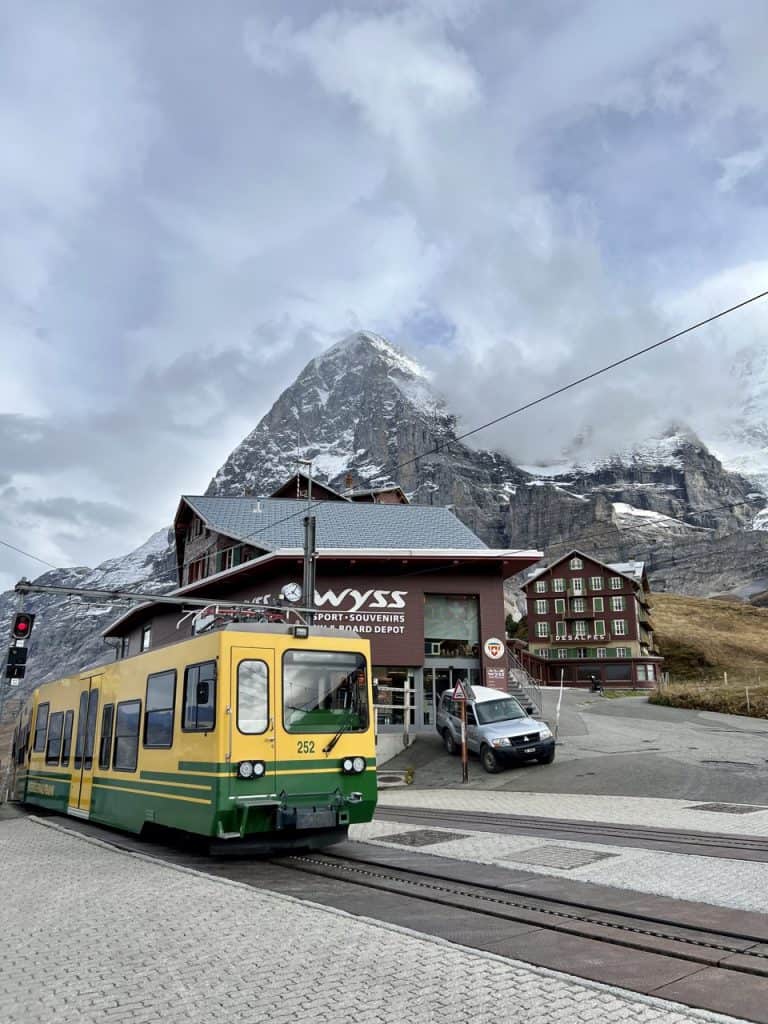
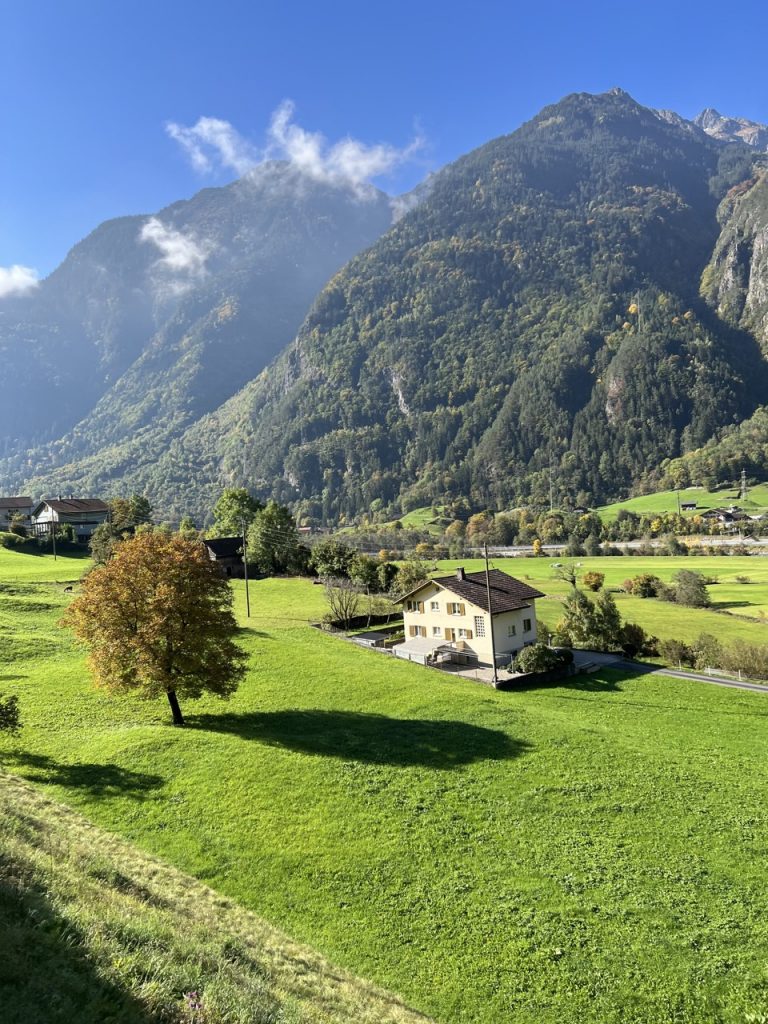
How to buy the Swiss Travel Pass?
The first step is to choose the time period for which you’d like your Swiss Travel Pass to be valid. If you’re visiting for under a week, you might want to choose between the 3,4, and 6-day options. For longer trips, choose between the 8-day Swiss Travel Pass and the 15-day Swiss Travel Pass, depending on how much you plan to be traveling around during your Switzerland trip.
Next, decide whether you’d like to go for a 1st Class Swiss Travel Pass or a 2nd Class Swiss Travel Pass. As I mentioned earlier, the major difference here is just in the number of seats, with there being fewer seats in First Class than Second Class. Otherwise, they are comparable when it comes to comfort and amenities.
You can buy your Swiss Travel Pass at a train station or a ticket counter, but if you’d like to be able to use it as soon as you arrive in Switzerland, including from the airport to your first destination, it’s smarter to buy your Swiss Travel Pass online.
If you prefer more flexibility, then you can also buy the Swiss Travel Pass Flex online before you arrive.
How does the Swiss Travel Pass work?
You can choose to activate your Swiss Travel Pass from your day of arrival in Switzerland or your preferred day of first use. You can do this online and then save it as an e-ticket with a QR code on your smartphone (or carry a printout if you prefer). The Swiss Travel Pass mentions your full name, the duration of validity, and the first day of use.
There is no need to queue up to buy train tickets or validate your pass anywhere once it has been activated online. You can just get on any public transportation and get going.
I knew I was going to be in Switzerland for about 18 days, and I had a 15-day Swiss Travel Pass. So, instead of activating it from the day I arrived, I chose to activate it from my third day in the country, when I’d be taking my first long-distance train from Zurich to Engelberg.
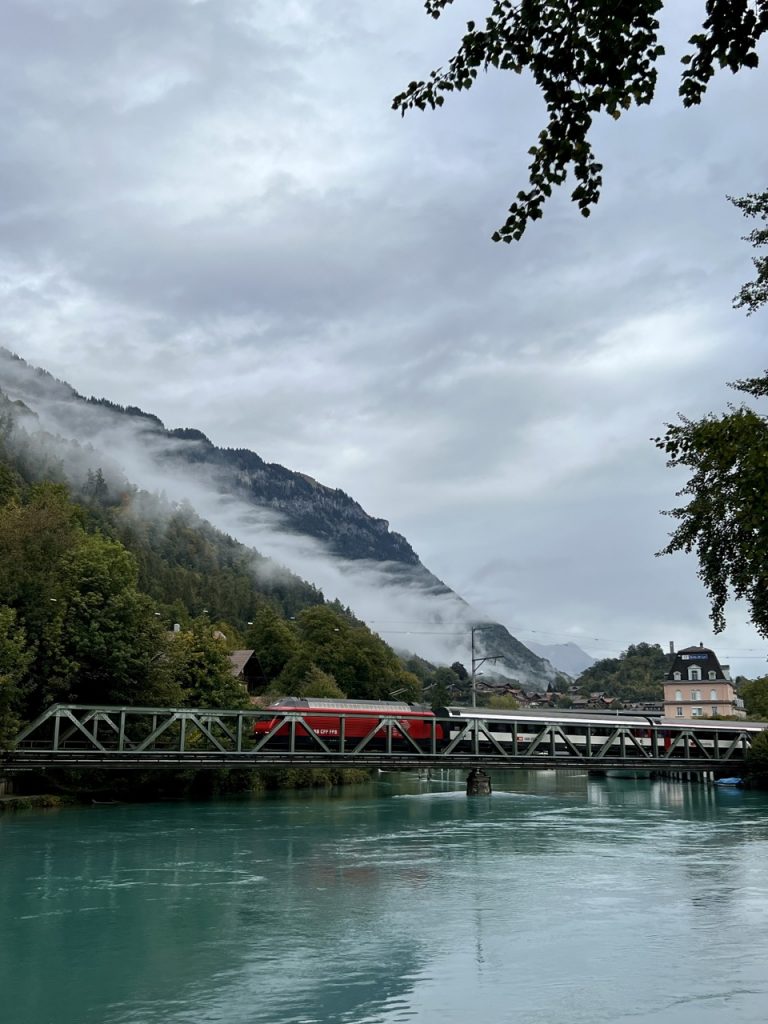
It was very convenient because I did not need to validate it every time I boarded a train, bus, or tram. I did need to show it to a ticket inspector when asked.
Since all public transportation was included, I did not think twice before jumping on a bus or train, or backtracking through a city or town to go somewhere.

For mountain railways and cable cars not included in the pass such as from Wengen to Mannlichen, I was informed while boarding. I could then simply show my Swiss Travel Pass and then buy those tickets at a significantly discounted rate.
For free museum admission where applicable, I just showed my Swiss Travel Pass on my smartphone and was allowed in.
How to use the Swiss Travel Pass?
How do I activate my Swiss travel pass?
Swiss Travel Passes are valid for a specific duration of consecutive travel days and you can choose the first day of use while buying them online. I was able to do this online in advance of my trip.
When you buy a Swiss Travel Pass online, you will get an e-ticket with a QR code that you can save to your smartphone. I don’t like carrying out paper printouts; I always lose them. So I saved my Swiss Travel Pass as a pdf in the Files on my smartphone.
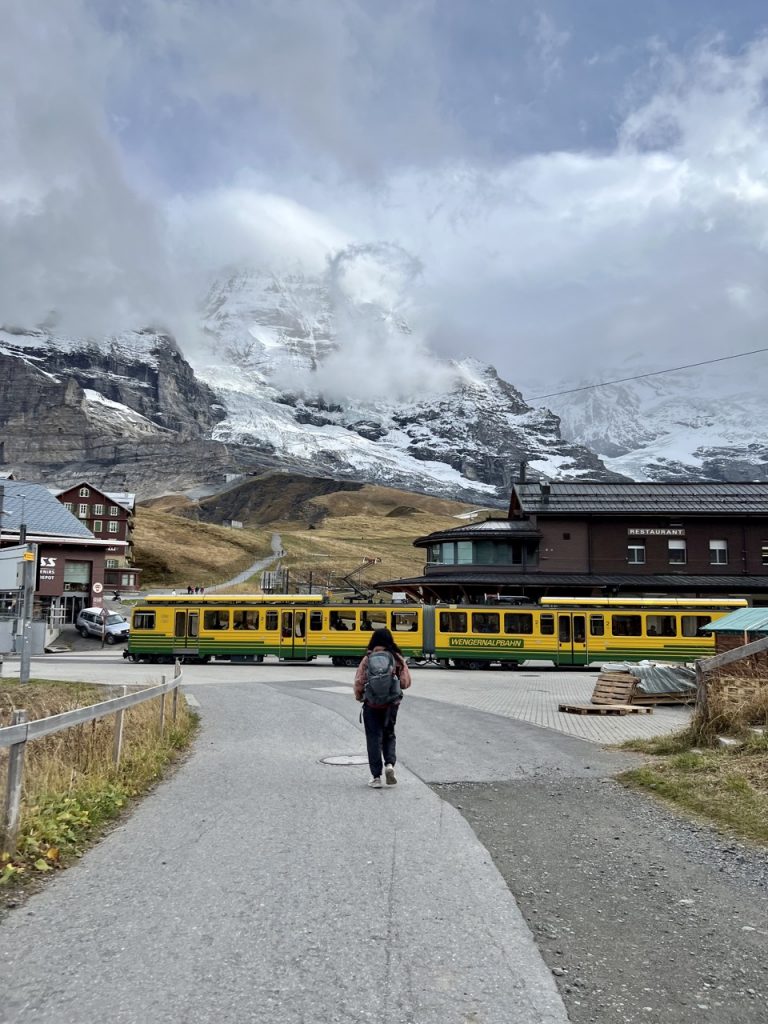
You can also save your Swiss Travel Pass on the SBB Mobile App. It is the public transportation app in Switzerland that helps you plan your journeys from Point A to B.
I did not know about the SBB Mobile App but was advised by a very helpful member of staff at the SBB Travel Center in Zurich. Per her advice, I downloaded the app, saved my Swiss Travel Pass in it, and often used the Timetable feature to plan my journeys.
Since the Swiss Travel Pass mentions the validity period and the first day of use, there’s no need to additionally activate or validate it.
You will be asked by the ticket inspector to present it, just show them the pass saved on your smartphone, and they will verify the QR code.
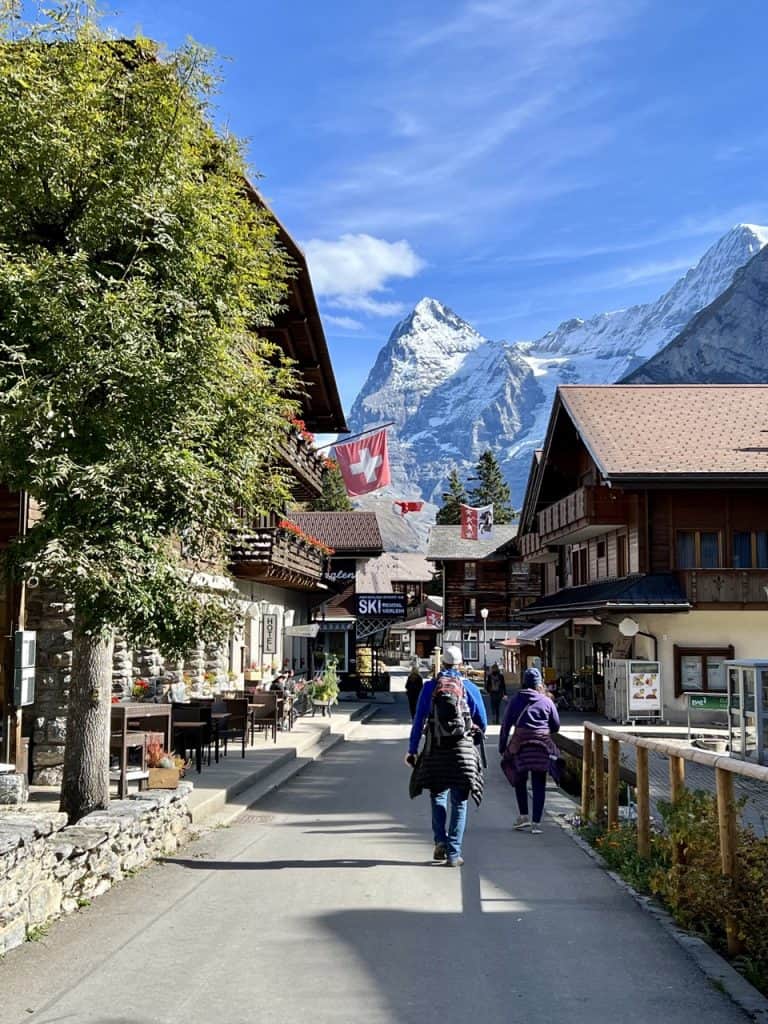
How to activate Swiss Travel Pass Flex
In case you have a Swiss Travel Pass Flex, you are free to choose your travel days within a period of 30 days but you will need to activate the pass for each chosen day. The 30-day validity begins on your chosen start date, i.e. when you first activate the pass for your first travel day.
Remember, you’ll need to activate your pass for each travel day, and you can easily do that online. For each activated travel day, the pass is valid from 12.00 am on the first day of validity to 05.00 am on the following day.
Is the Swiss Travel Pass worth it?
The Swiss Travel Pass offers a great deal and excellent value for money, but whether or not it’s worth it for you depends on:
- Whether you plan to move around and see different cities, towns, and regions and cover popular destinations in Switzerland, traveling by train.
- How much you plan to travel around Switzerland during your trip to the country.
- How often you plan on taking public transportation to get around in Switzerland.
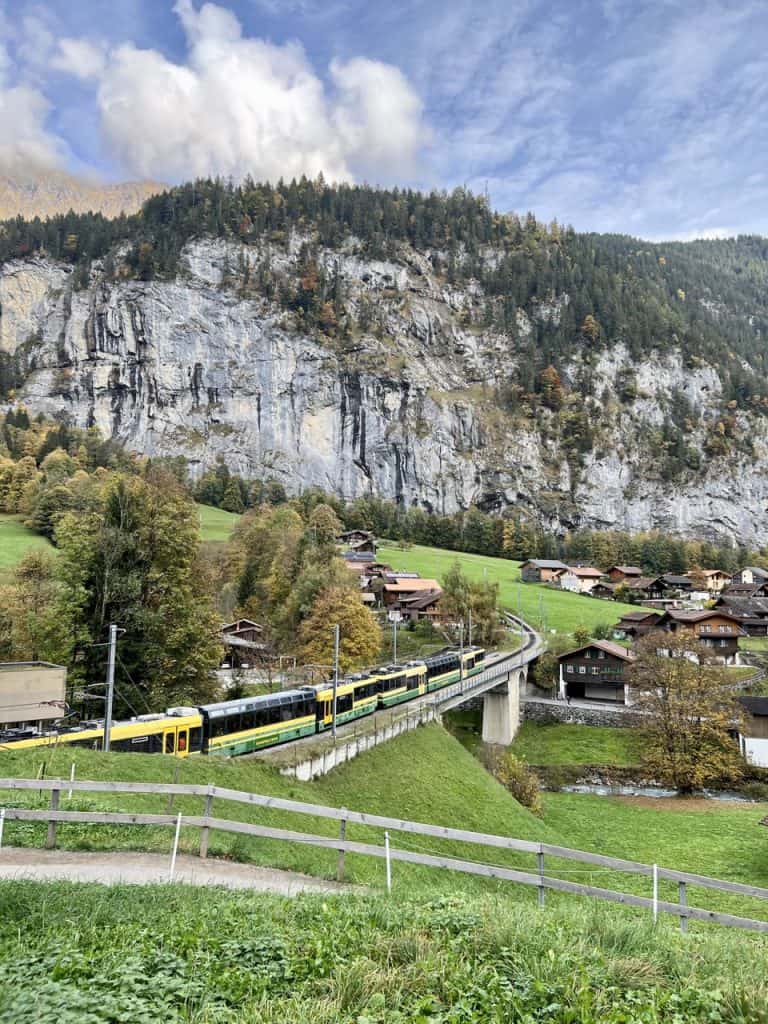
The Swiss Travel Pass is worth it if you’re planning to use public transport frequently during your trip to visit many different cities and towns, and do a lot of train travel in Switzerland.
- It’s worth it if you plan on taking long-distance intercity trains around Switzerland such as from Zurich to Jungfraujoch, or Zurich to Lucerne and Mount Pilatus. It’s also easy to visit wine regions and wineries in Switzerland from the major cities such as Zurich, Lausanne, Lucerne, Lugano, and Geneva by train.
- It’s going to be worth it if you plan on taking premium panorama trains like GoldenPass Express, Gotthard Express Panorama, Bernina Express, and Glacier Express.
- The added flexibility of taking any form of public transportation when you please is also worth it.
- If you plan on going on mountain excursions such as Mt Rigi and other discounted peaks like Jungfraujoch, the Swiss Travel Pass will be worth it.
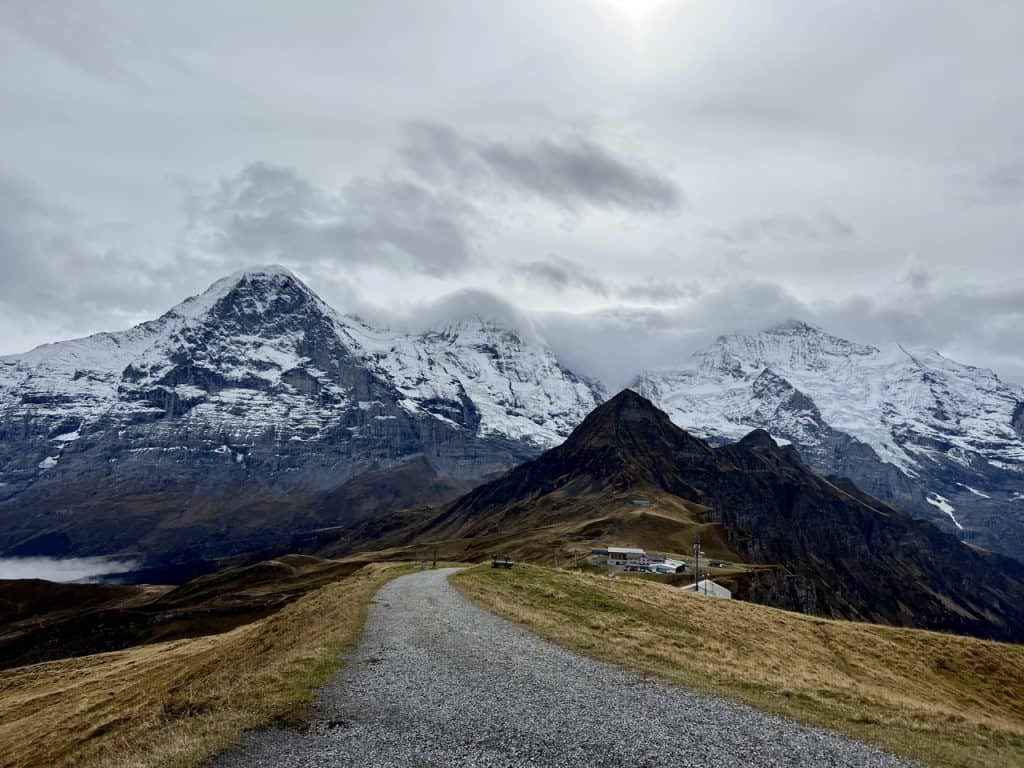
You’ll have a better idea when you compare the cost to the cost of just a single mountain excursion, say Mt Rigi and this ticket to Mt Rigi from Lucerne, which includes boat, rack railway, and cable car. All of this is included in the Swiss Travel Pass.
It’s certainly far more convenient than buying individual tickets for each leg of your journey.
However, if you only plan on visiting just one or two locations in Switzerland, it may not be worth purchasing the pass.
Was the Swiss Travel Pass Worth it for Me?
In full disclosure, I was gifted the Swiss Travel Pass as official media at an adventure travel conference. But I’d happily have paid for it, given how much I used it to get around and how much value I got out of it. To me, it was totally worth its price.
Unlimited travel for one price: I used local public transportation including trains, buses, and trams in cities like Zurich, Interlaken, Lucerne, Lugano, Locarno, and mountain railways in the Bernese Oberland including Lauterbrunnen and Wengen, far too many times to count. In fact, in Zurich and Lugano, local bus rides were how I got around all day. I took so many cable cars in the Jungfrau Region, including Murren, most of which were included.
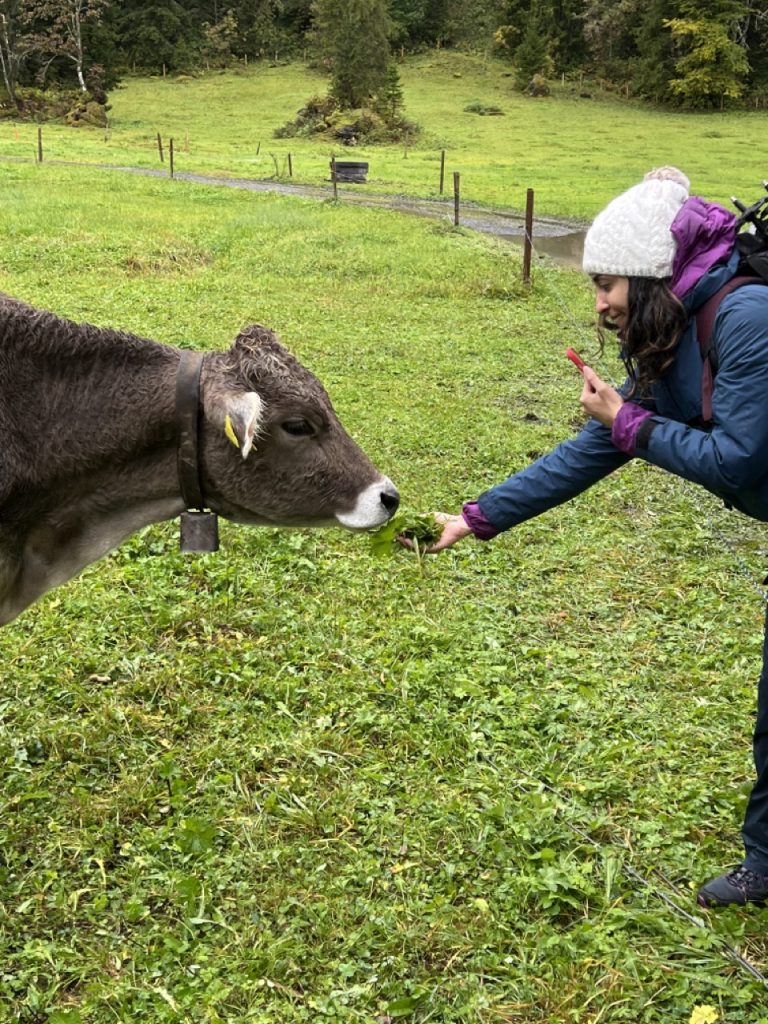
I took many intercity trains, from Zurich to Interlaken, and then on to Engelberg. Then I traveled from Interlaken to Lugano. I made my way from Lugano to Lucerne on the Gotthard Panorama Express which also involved a boat trip from Flüelen to Lucerne. From Lucerne, I went back to the Bernese Oberland to explore more of the Jungfrau Region.
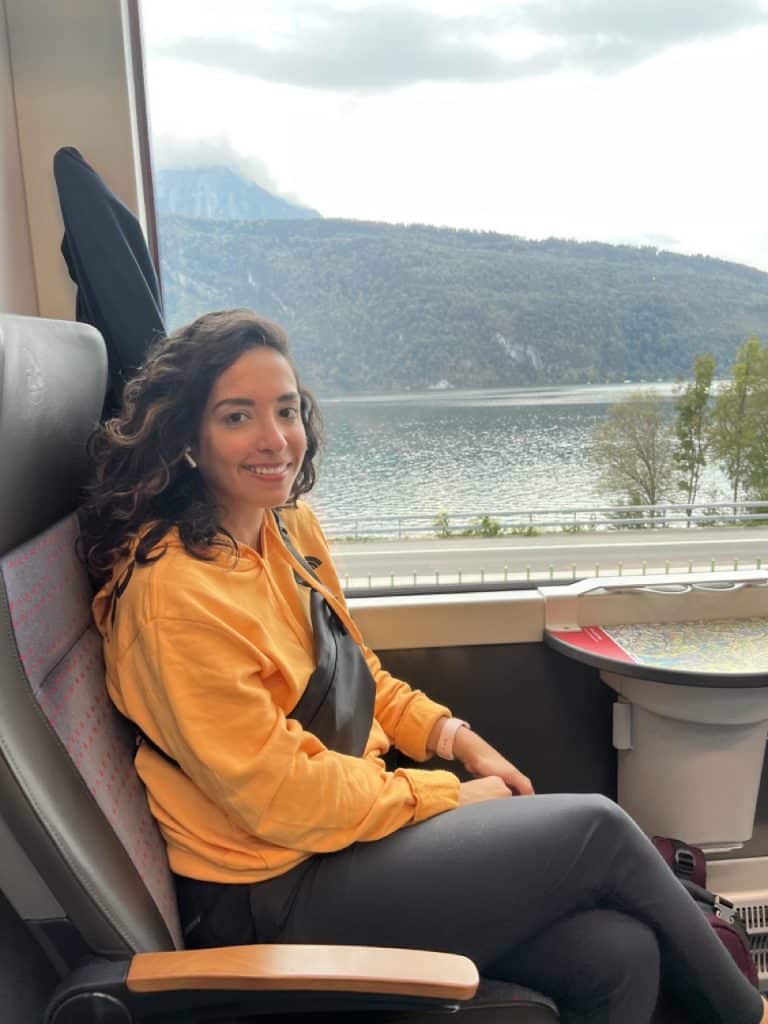
Since I knew that I would not have to pay over and over, I did not need to calculate the cost of taking a bus or a train each time, I could simply hop on and off as I pleased. I did not even need to think twice before booking my seat on the Gotthard Panorama Express, which I did just because I wanted to take a panorama train.
Extremely convenient: So many buses and trams, train journeys and train changes, and all of it so easy, simplified, and straightforward to navigate because I had the all-in-one Swiss Travel Pass.
There was no need for me to queue up at a ticket counter or kiosk, or even log into the app to buy a ticket. This meant that if I had only a minute to do a train change between cities, I could easily make it in time and not have to miss my train.
Excellent infrastructure and services: Honestly, the public transportation network in Switzerland is incredible — it is very easy to navigate, efficient, reliable, on time, comfortable and well-maintained. There are connections available even to villages that are not on the tourist trail, for travelers who would like to get off the beaten path.
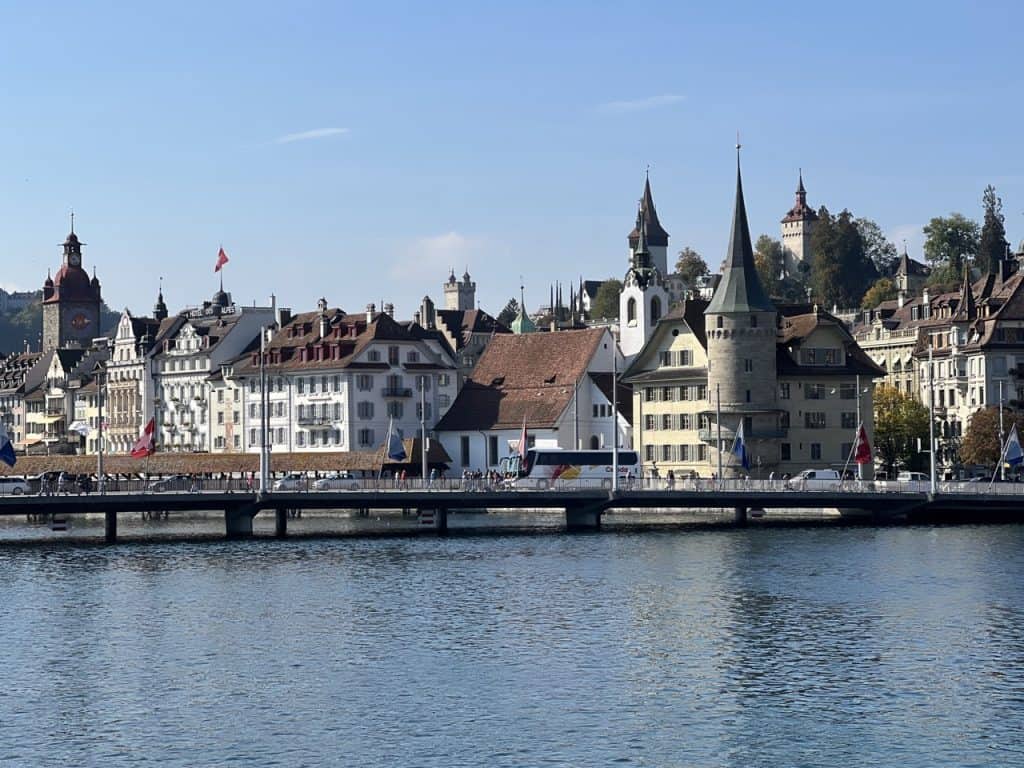
I can’t imagine getting around in Switzerland any other way; in fact, I enjoyed my travels around Switzerland so much, that I looked forward to every train ride and the fascinating views along the way, as much as I looked forward to the destinations I was visiting.
The Swiss Travel Pass includes Premium Panorama Trains
I did not realize initially that the pass also includes premium panorama trains such as the GoldenPass Express, Bernina Express, Glacier Express, and Gotthard Panorama Express. Why is that important, you ask? Swiss panorama trains travel through some of the most stunning landscapes in the world, and taking one of these is an experience in itself.
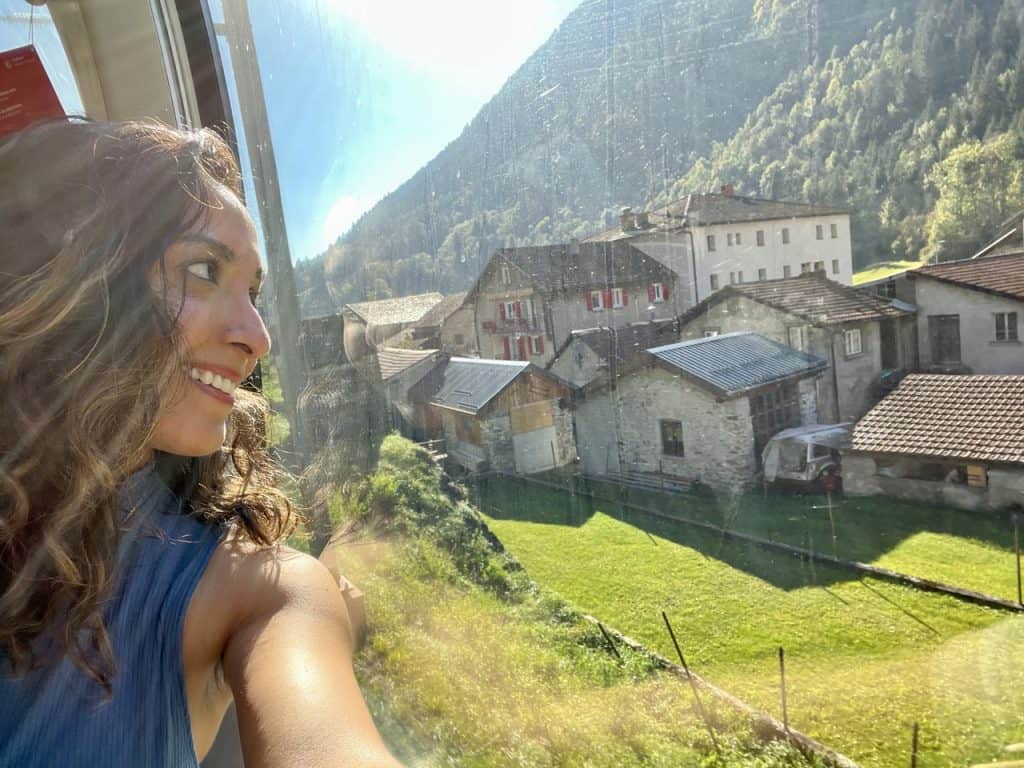
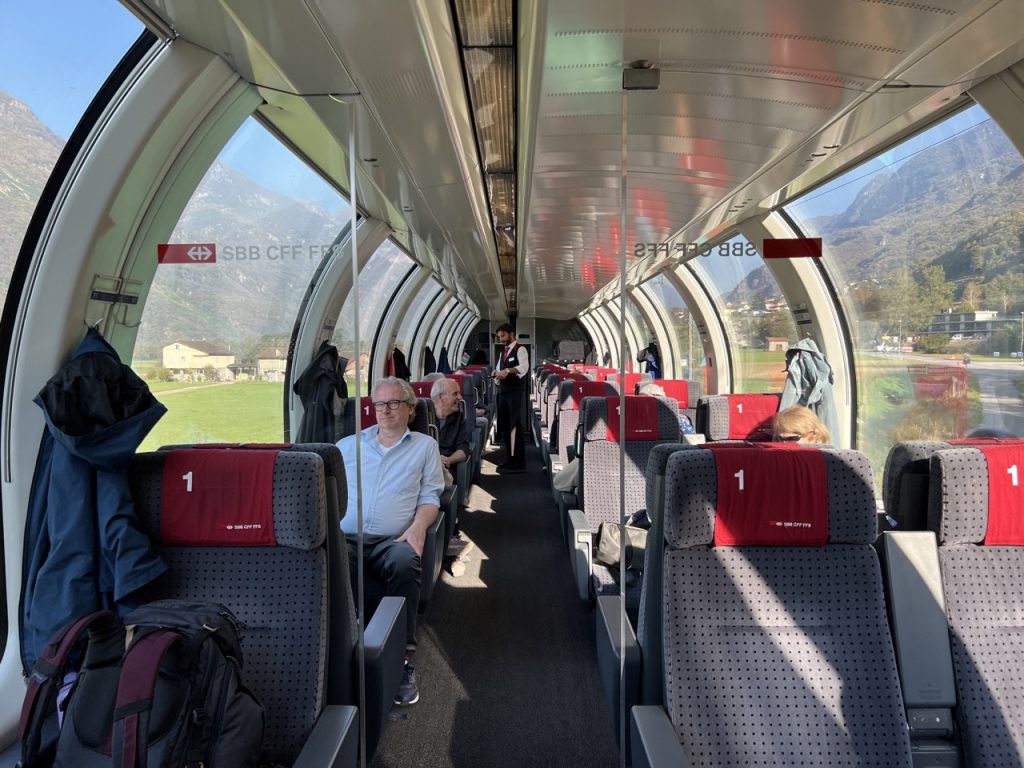
They are quite luxurious, have large panoramic windows, and food and beverage service. Like many visitors in Switzerland, it was a dream come true for me to be able to take a panorama train.
When it dawned upon me that panorama trains were included, I changed my itinerary (which was pretty flexible in the first place) to include at least one panorama train. I used my Swiss Travel Pass to take the Gotthard Panorama Express from Lugano to Lucerne. On my next trip to Switzerland, I made sure my itinerary included the GoldenPass Express, then newly opened the previous December, from Montreux to Interlaken.
I did have to pay a small reservation fee to book my seat. I paid CHF 16 the first time and CHF 20 the second time but the reservation fee depends on the route, season, and class of your Swiss Travel Pass or ticket.
The journey from Lugano to Lucerne on the Gotthard Panorama Express actually involved taking the train to Flüelen, and then continuing from Flüelen to Lucerne by boat, which was also included in the pass. From Montreux to Interlaken, the GoldenPass Express offered a direct connection with no changes. These journey were among the highlights of my trips to Switzerland, thanks to their unbelievable views and luxurious overall experience.
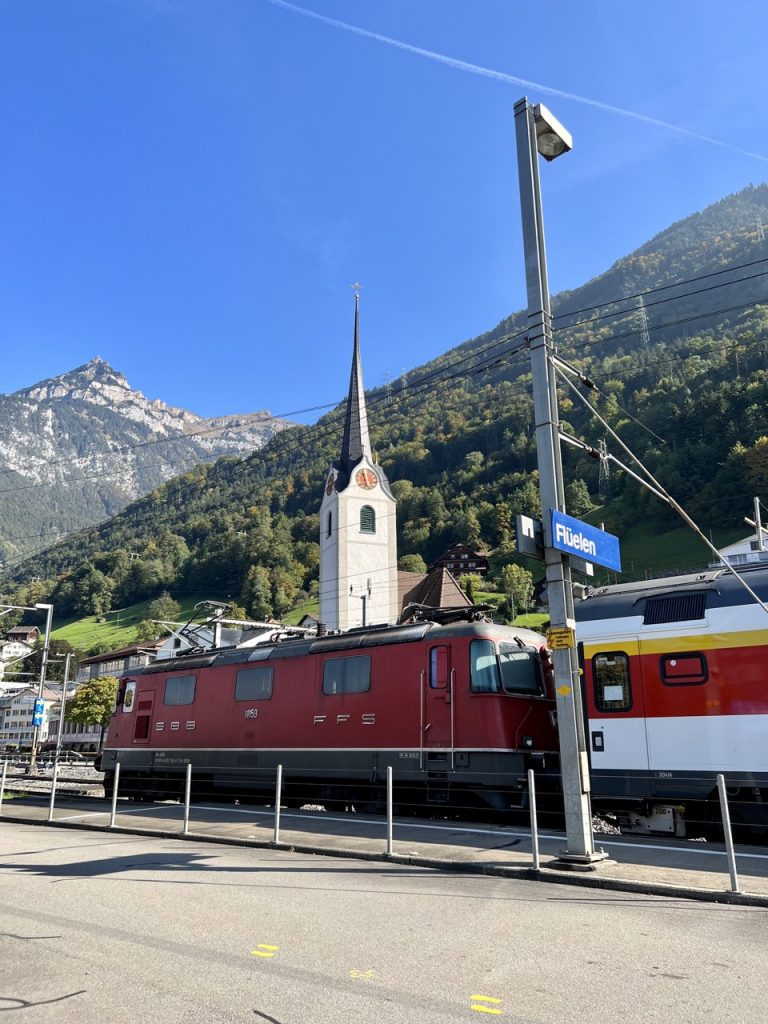
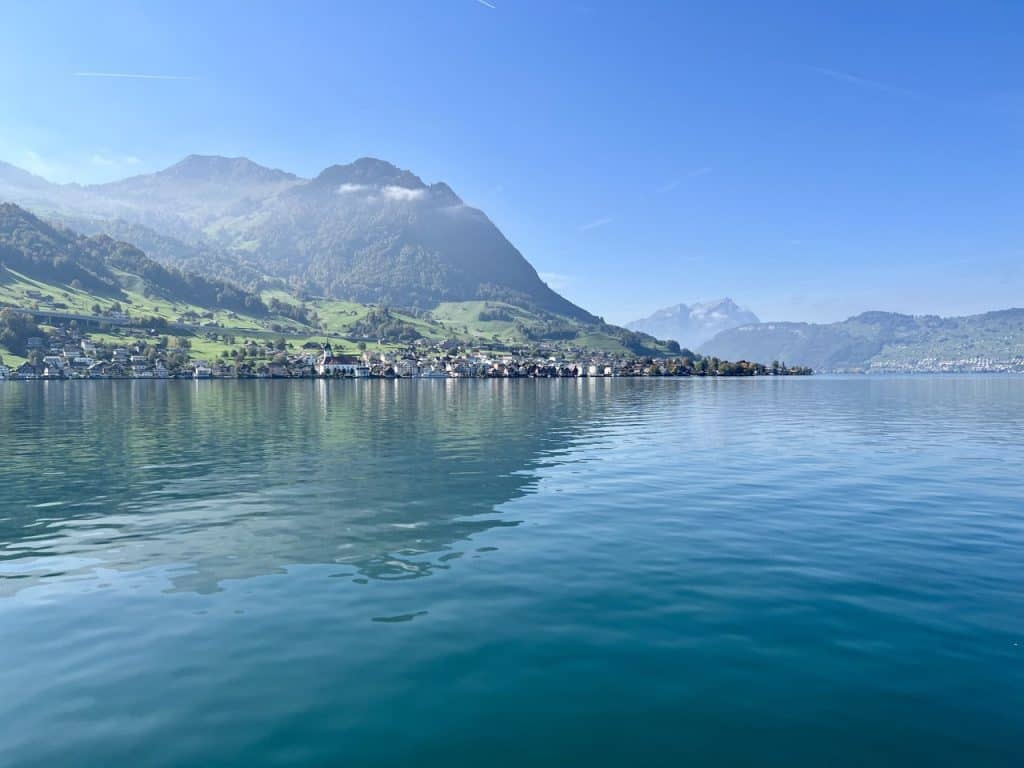
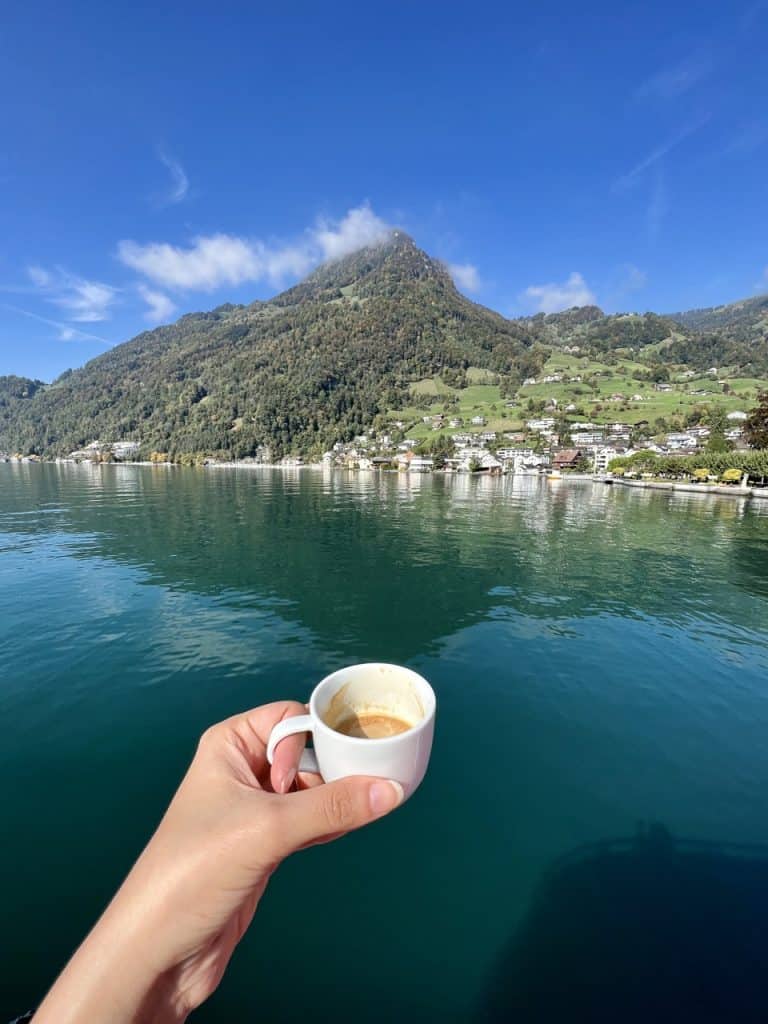
I also visited an art museum in Zurich, on what was a gloomy, rainy day, and entry was free for holders of a Swiss Travel Pass. It was nice to know that there were many museums all around the entire country that I could have visited, had I more free time in each city I was visiting.
Which museums are included in the Swiss Travel Pass?
There are over 500 museums around Switzerland that are included in the Swiss Travel Pass, and not just museums, many art galleries and castles are also included. While visiting any of these, it’s worth asking if your Swiss Travel Pass covers entrance, before you buy a ticket.
Some notable museums covered by the Swiss Travel Pass include:
- Swiss National Museum in Zurich
- Chillon Castle in Montreux
- Matterhorn Museum in Zermatt
- Glacier Garden in Lucerne
- Olympic Museum in Lausanne
- Schloss Thun (Thun Castle) in Thun
- Castle of Gruyères in Gruyères
- La Maison du Gruyère in Gruyères
Will the Swiss Travel Pass save you money?
You may save money with the Swiss Travel Pass, but it depends on how many trips you plan to take and how often you plan to use public transportation. If you only make one or two trips during your stay in Switzerland, it’s probably not worth purchasing this pass.
However, if you plan to visit several cities in the country, plan on taking public transportation frequently, like multiple times a day, while actively sightseeing in cities and towns, then this travel pass could save you money.
If you plan on taking panorama trains such as GoldenPass Express, Bernina Express or Glacier Express, then the Swiss Travel Pass offers a great deal.
Plan on doing boat trips on Lake Zurich, Lake Thun, Lake Brienz, and Lake Lucerne? Then it’s likely that the Swiss Travel Pass is will save you money. For example, these tickets should give you an idea about a boat trip on Lake Thun and Lake Brienz from Interlaken. With a Swiss Travel Pass, this boat trip would be covered.
Here’s a First Class cruise on Lake Lucerne with a gourmet lunch. With the Swiss Travel Pass, a similar quality cruise would be covered, you’d just have to pay for your meal at the restaurant.
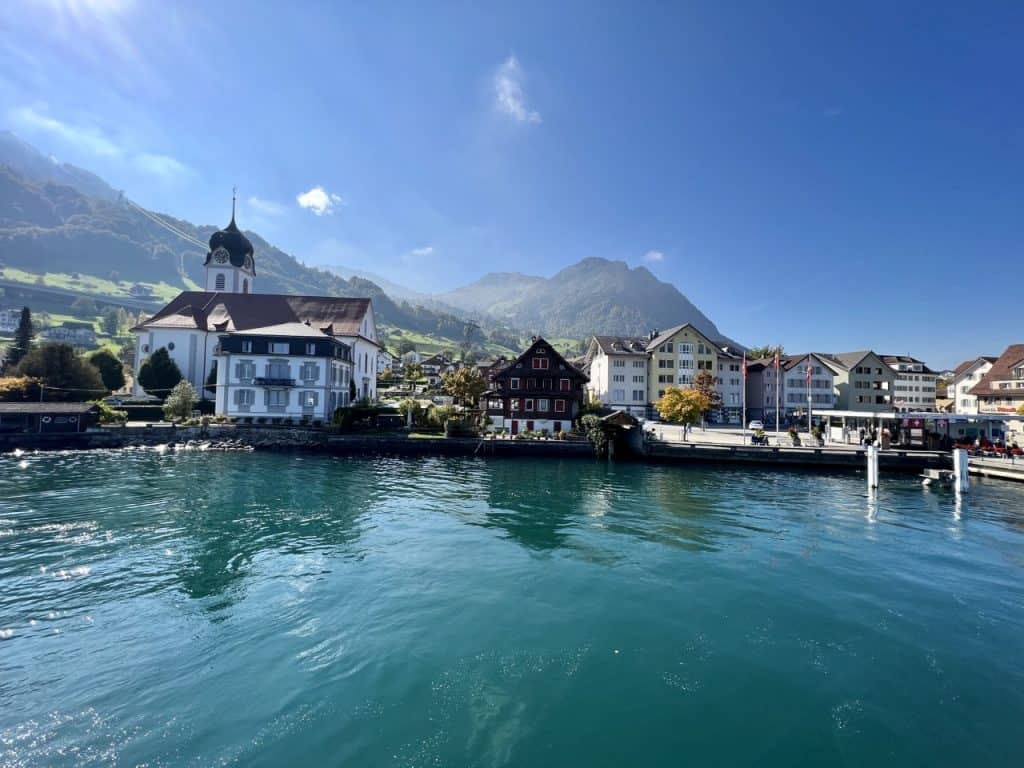
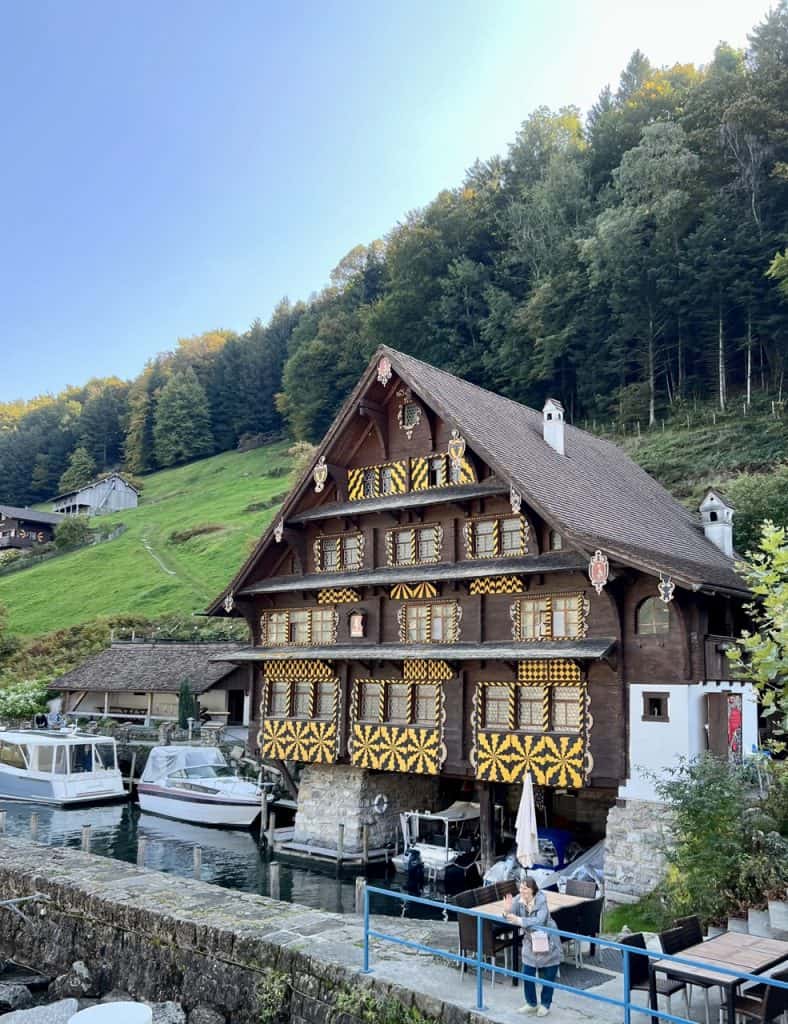
If you have your itinerary planned out, you can do the math before you buy a Swiss Travel Pass to see if it will actually save you money. Just add up the ticket prices for each of the journeys by public transportation on your trip and compare it to the price of the Swiss Travel Pass for the same class.
In my case, the First Class Swiss Travel Pass worked out cheaper than the total of all point-to-point tickets in First Class for every instance of travel by public transportation, considering that I also did a panorama train, the Gotthard Panorama Express.
Is the Swiss Travel Pass good for families with children?
The way I see it, the Swiss Travel Pass is especially good for families with children, provided they also have a Swiss Family Card (available for free). That way, any children under 16 years of age can travel for free on all public transportation, as long as they’re with at least one parent who holds a valid Swiss Travel Pass.
Which Swiss Travel Pass is right for me?
If you would like to have the utmost level of luxury, i.e. to travel in First Class on Swiss trains, where seating is widely spaced out, there is lots of space for luggage and bikes, and there are rail cars meant for business travelers who’d like to get work done, then choose the Swiss Travel Pass for First Class.
If you’re on a budget, but would still like to have an all-in-one travel pass so that you don’t have to buy multiple point-to-point tickets, and intend to travel around Switzerland a lot, then a Second Class Swiss Travel Pass also offers great value for money and might be your best option.
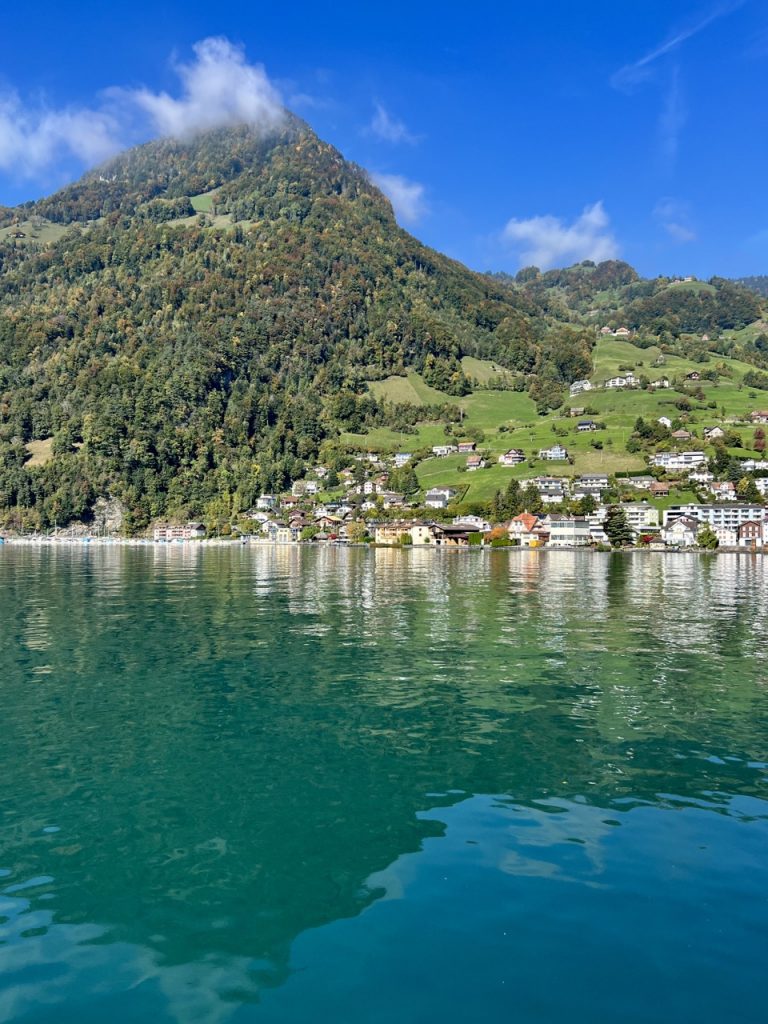
If you don’t want to be bound by consecutive travel days and want greater flexibility, then choose the Swiss Travel Pass Flex which lets you pick a certain number of travel days within a period of 30 days.
Other than the Swiss Travel Pass and the Swiss Travel Pass Flex, you have the option of the Swiss Half Fare Card that allows you to travel on public transportation in Switzerland for up to 50% off the regular fare.
Can I transfer my Swiss Travel Pass to a friend or family member?
A Swiss Travel Pass is not transferable to another person. It bears your first and last name, and you will be asked to show your passport or another identification to verify that the pass belongs to you.
Is the Swiss Travel Pass Refundable?
This Swiss Travel Pass is fully refundable as long as no part of it has been used and at least a day in advance. Things can happen, and plans can change, so it’s best to buy your Swiss Travel Pass online from Get Your Guide because their refund policy is favorable to customers, allowing full refund and cancellation upto 24 hours before the date of activation.
Other Frequently Asked Questions about the Swiss Travel Pass
Can you use the Swiss Travel Pass on the Glacier Express?
The Swiss Travel Pass includes transportation on the Glacier Express and other panorama trains such as GoldenPass Express, Bernina Express as well. But you will need to pay a seat reservation fee to book your seat in advance to be able to travel on a panorama train.
Can you use the Swiss Travel Pass to visit Jungfraujoch?
The Swiss Travel Pass does not include transportation all the way to Jungfraujoch. It covers travel up to Wengen or Grindelwald. From there you will need to pay for the ticket up to Jungfraujoch, but Swiss Travel Pass holders get a discount on the fare (approximately 25% discount at the time of writing in 2022).
Alternatively, you can simply book tickets to Jungfraujoch here.
Does the Swiss Travel Pass cover cable cars?
The Swiss Travel Pass does cover cable cars to certain villages/towns but you might still need to get tickets from these villages to mountain summits (such as Jungfraujoch, Mannlichen, or Schilthorn) that are your final destination. These tickets are available at discounted rates to Swiss Travel Pass holders.
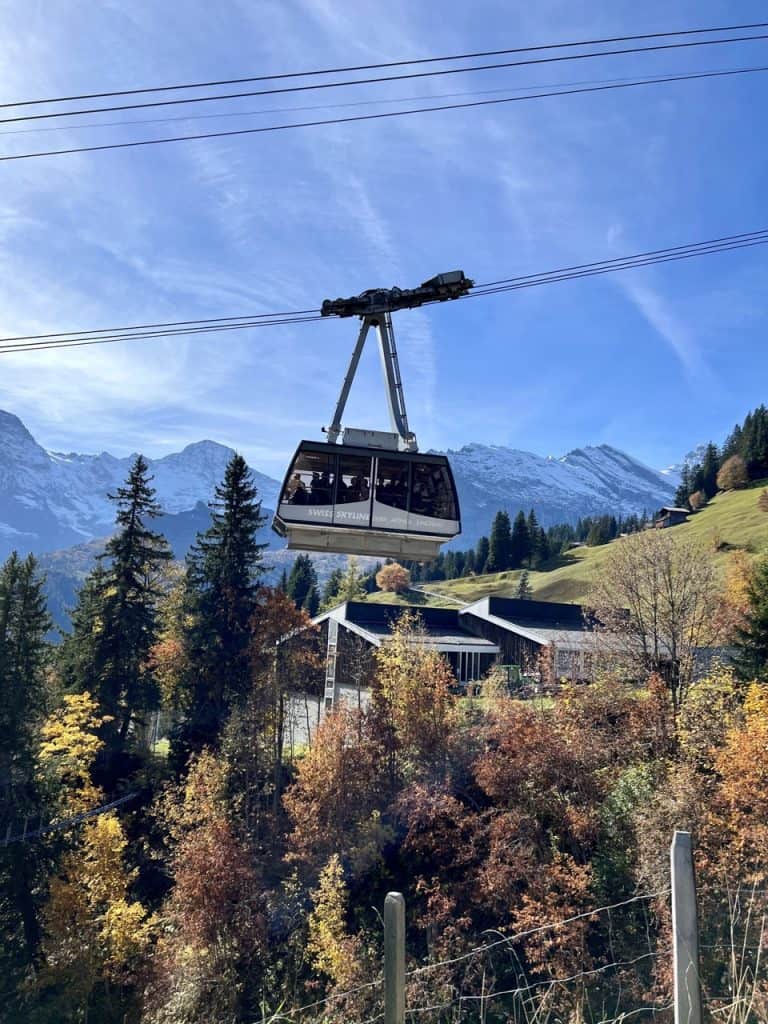
Does the Swiss Travel Pass cover Schilthorn?
The Swiss Travel Pass does not cover the entire journey to Schilthorn. The Swiss Travel Pass covers the cableway from Stechelberg in the Lauterbrunnen Valley to Murren, but to go further to Schilthorn, you will need to get a ticket, which is available at a discounted fare to Swiss Travel Pass holders.
In case you don’t plan on getting a Swiss Travel Pass, you can buy round-trip cable car tickets to Schilthorn to visit Piz Gloria and Bond World.
Does the Swiss Travel Pass cover Grindelwald First?
The train to Grindelwald is covered by the Swiss Travel Pass, but you will need to buy tickets (available at a discounted rate for Swiss Travel Pass holders) from here for the cableway (gondola) to Grindelwald First.
Does the Swiss Travel Pass cover Mount Titlis?
Your journey till Engelberg is covered by the Swiss Travel Pass. To go further up to Mount Titlis by cable car, you will need to buy tickets—these are available at a discount for Swiss Travel Pass holders.
If you don’t want to go on your own, this half-day guided tour of Mount Titlis from Lucerne might be a good choice.
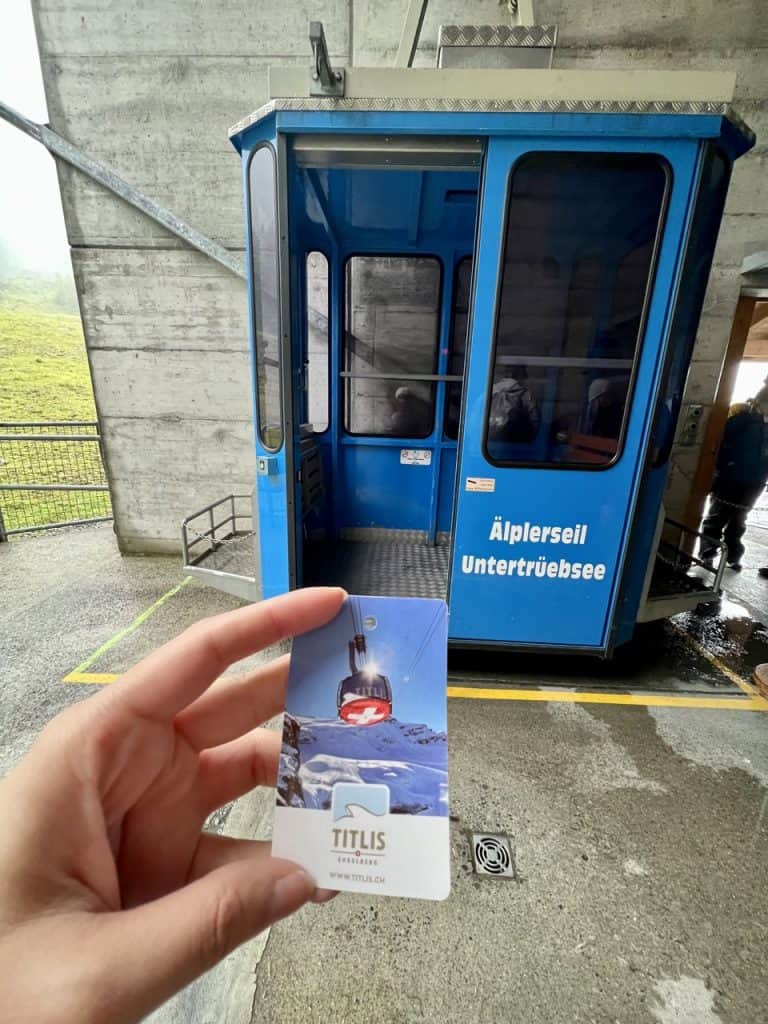
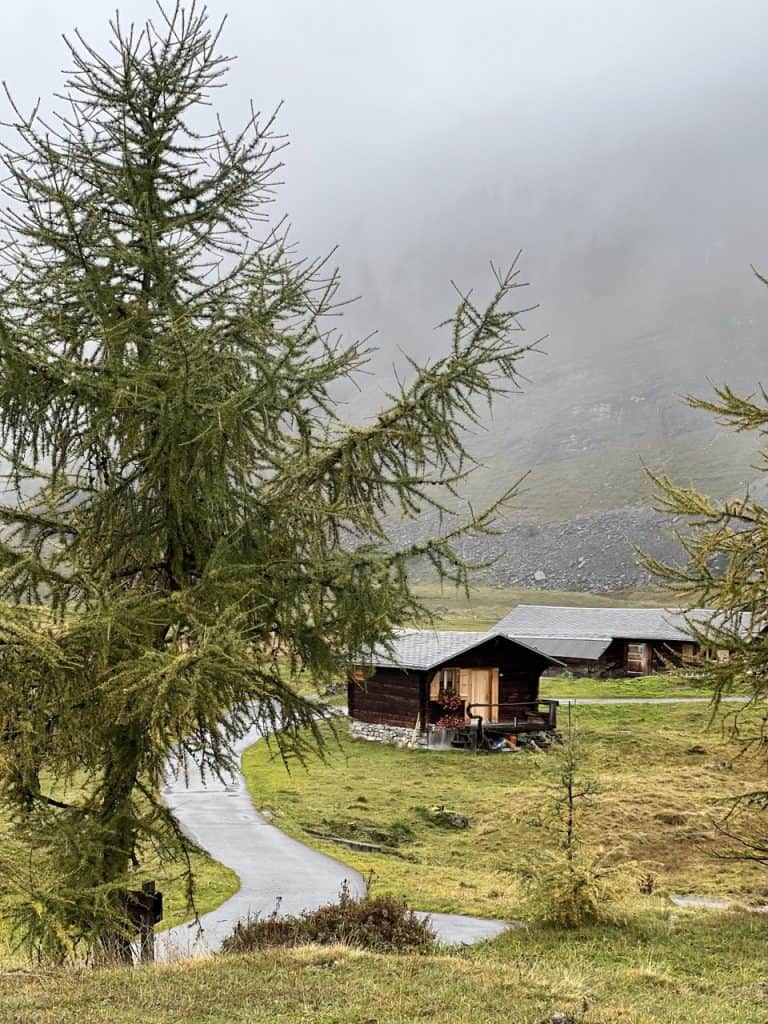
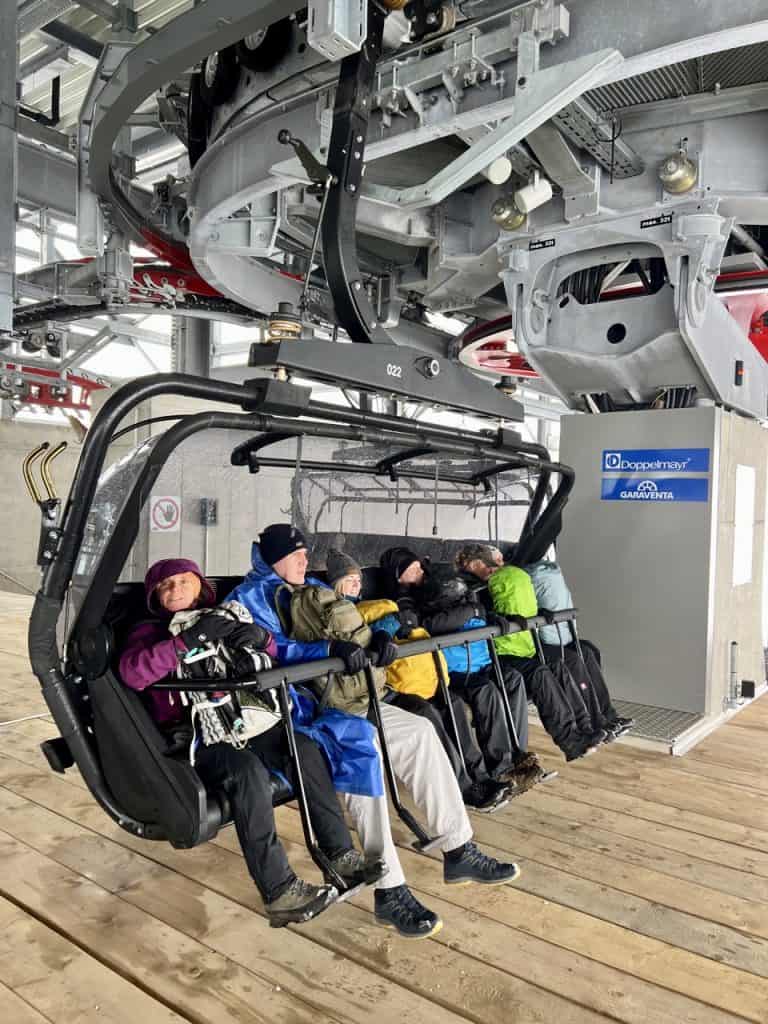
Swiss Travel Pass Map
The official Swiss Travel Pass website contains detailed information about coverage, i.e., all the places to which public transportation is included in the Swiss Travel Pass. There’s also a map you can save for reference.

How does the Swiss Travel Pass compare to other passes?
Here are comparisons with some other Swiss rail passes.
Swiss Travel Pass versus Swiss Travel Pass Flex
| Swiss Travel Pass | Swiss Travel Pass Flex |
| Can be valid for 3, 4, 6, 8, or 15 consecutive days of travel | Can be valid for any non-consecutive or flexible 3, 4, 6, 8, or 15 days of travel within a 30-day period |
| Days of travel must be consecutive | Days of travel can be selected freely within a 30-day period allowing more flexibility |
| Is active from the first day as selected while booking | Has to be activated for each day of travel |
| Useful for travelers who will be moving around frequently nearly every day for the duration of their trip | Useful for travelers who are staying longer in each destination and know they will only be traveling on certain days that are spread out far apart within the 30-day period |
| Is cheaper than the Swiss Travel Pass Flex | Is more expensive than the Swiss Travel Pass |
| A discount of 30% is available for travelers under 25 years of age | A discount of 30% is available for travelers under 25 years of age |
| Children aged 16 and under can travel for free with at least one parent who holds a valid Swiss Travel Pass and a Swiss Family Card | Children aged 16 and under can travel for free with at least one parent who holds a valid Swiss Travel Pass Flex and a Swiss Family Card |
Swiss Travel Pass versus Swiss Half Fare Card
| Swiss Travel Pass | Swiss Half Fare Card |
| It’s a public transportation pass that allows unlimited travel on buses, trams, trains, boats, and many mountain railways and discounts on mountain excursions and cablecars. | It’s a discount card that allows 50% off on public transportation tickets which includes buses, trams, trains, boats, cable cars, mountain railways, and excursions |
| You do not need to buy point-to-point tickets when you have this pass as an e-ticket saved to your phone | You need to buy point-to-point tickets but can buy them at a discount, you still can save this discount card as an e-ticket as you will be asked to show it |
| Useful for travelers who will be traveling around Switzerland a lot using public transportation | Useful for travelers who won’t be traveling around as much, and will have a limited few journeys using public transportation |
| Discounts are available on excursions and cableways that are not included | Discounts are available on all public transportation and on excursions and cableways |
| You largely lock in the cost of public transportation when you buy this all-in-one pass | You do not lock in the cost of public transportation on your trip. You’ll need to pay for this card, then will need to pay at least 50% for each journey using public transportation, which can eventually work out to a more expensive arrangement |
| It is more convenient | It is less convenient as you still need to buy tickets for individual journeys |
| You will need to pay for seat reservations on premium panorama trains such as Bernina Express and Glacier Express | You will need to buy tickets (at a discount) |
| It’s valid for 3, 4, 6, 8, or 15 consecutive days | It’s valid for one month |
| Children under 16, traveling with a parent who has a valid Swiss Travel Pass and a Swiss Family Card travel for free | Children under 16, traveling with a parent who has a valid Swiss Half Fare Card and a Swiss Family Card travel for free |
| Covers free entry to many museums in Switzerland | Does not offer free entry to museums |
Swiss Travel Pass versus Jungfrau Pass
| Swiss Travel Pass | Jungfrau Pass |
| Useful for traveling by public transportation all around Switzerland | Useful for traveling by public transportation only in the Jungfrau region |
| Can be valid for 3, 4, 6, 8 or 15 days of travel | Can be valid for 3, 4, 5, 6, 7 or 8 days |
| Is valid on buses, trams, trains, boats, many mountain railways, and cable cars all over Switzerland | Is valid on most mountain railways and cable cars, as well as buses and boats in Interlaken, Bernese Oberland, and Jungfrau regions |
| This does not include cable cars to Mannlichen and Grindelwald First or train to Kleine Scheidegg
Does not include Jungfraujoch but a discount is available | Includes all transportation to Mannlichen, Grindelwald First and train to Kleine Scheidegg
Does not include Jungfraujoch but a discount is available |
| Children under 16 years travel for free with one parent holding a valid Swiss Travel Pass and Swiss Family Card | Children under 16 years do not travel for free, but discounts are available |
| No discount is available if you also hold a Jungfrau pass | Discounted rates are available for Swiss Travel Pass or Swiss Half Fare Card holders who want to buy a Jungfrau pass |
| You can save the e-ticket to your smartphone | You can save the e-ticket to your smartphone |
Disclaimer: Some links in this post are affiliate links. If you make any purchases using them, I might make a small commission at no extra cost to you. That helps keep this site running.
Disclosure: I was gifted a Swiss Travel Pass by the Swiss Travel System and Switzerland Tourism. All opinions, as always, are honest and independent.
Book your trip
- Browse hotels on Booking.com or Hotels.com
- Book a private transfer with Welcome Pickups
- Book tours and day trips with Get Your Guide
- Browse flights on Skyscanner
- For digital nomads, SafetyWing Insurance is currently the best option

